Methodology and corpus
All ceramic sherds from Tell Mozan are processed according to a standardised procedure in the field, and analysed based on a specific set of typological criteria, supervised by Marilyn Kelly-Buccellati.
For post-excavation analysis, review and digitisation, please see below section A15 ceramic review.
A15 is one of the largest unit books. A total of 62,337 sherds have been collected and analysed from this unit, 51,930 of which are body sherds, and 10,407 of which are shape sherds (diagnostic sherds).
The individual sherds for A15 can be found in the righthand menu under qp pottery.
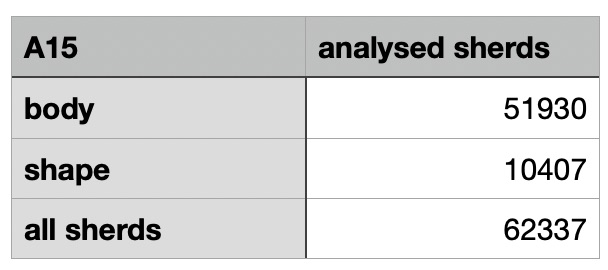
*Note: statistics presented here based on sherds only (qp); they do not include complete vessels (items and q-items).
Chronology
The stratigraphic sequence of A15 can be found here. There is some evidence of pre-palatial structures (f565), but the first main period of occupation begins with the AP palace in the Akkadian period (Horizon 6), which is also reflected in the large amount of sherds from these strata. This is followed by various structures and build-up over the Ur III and Isin-Larsa period (Horizon 5), also represented by a significant amount of pottery, after which we have another major period of construction and use in the Khabur period (Horizon 6), again with a large assemblage of ceramic sherds. This period includes use of the space for burials which have yielded a number of complete or nearly complete ceramic vessels. Finally, Horizon 9 represents topsoil and disturbed upper layers.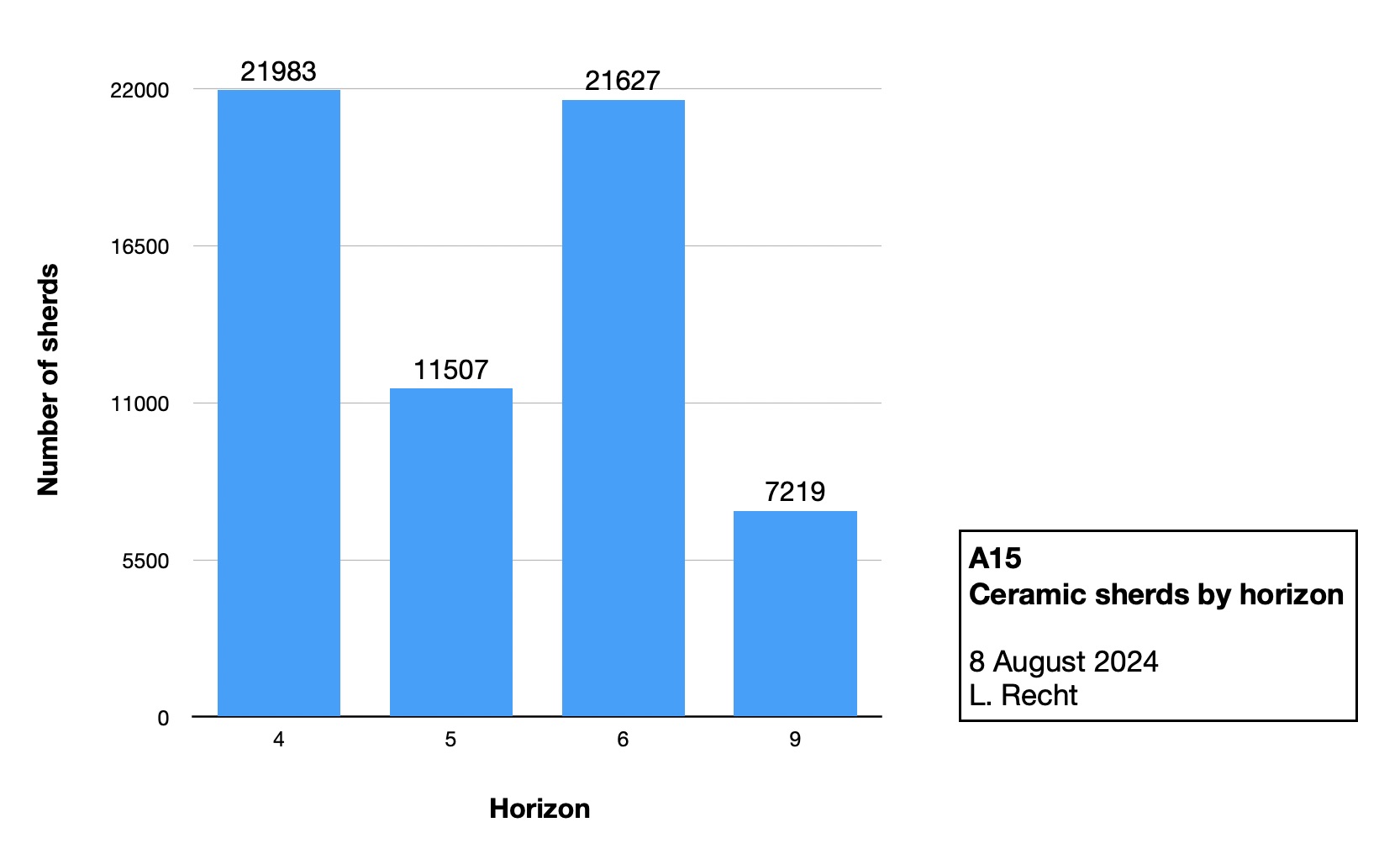
Wares
As is typical throughout the archaeological strata of Tell Mozan, the most common wares in A15 are Chaff Temper Ware (CH) and its finer version, Fine Chaff Temper Ware (FC). Together, they make up almost 80% of the total assemblage of ceramics from A15, a distribution that only fluctuates slightly through the horizons represented in this unit. Other wares with a fair amount of sherds include Red Orange Calcite Temper Ware (RC) and Pebble Temper Ware (P), with smaller amounts of Fine Red Orange Calcite Temper Ware (RC1), Wet Smooth Ware (WS), Simple Ware (S), Rough Ware (R) and Gray Ware (G). Evidence of imported ceramics and their local imitations appear in the form of smaller numbers of sherds of Bi-Color Ware (BC), Kura-Araxes Ware (ETC), Metallic Ware (M), and Imitation Metallic Ware (IM).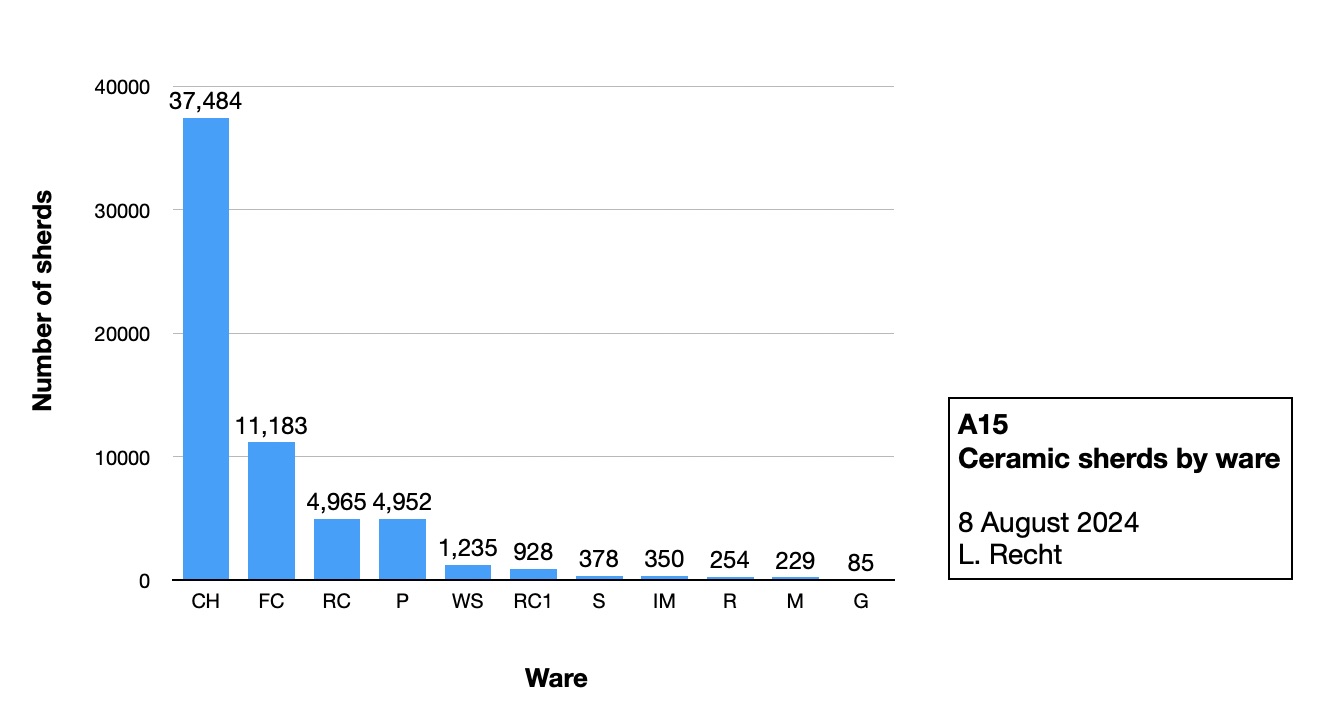
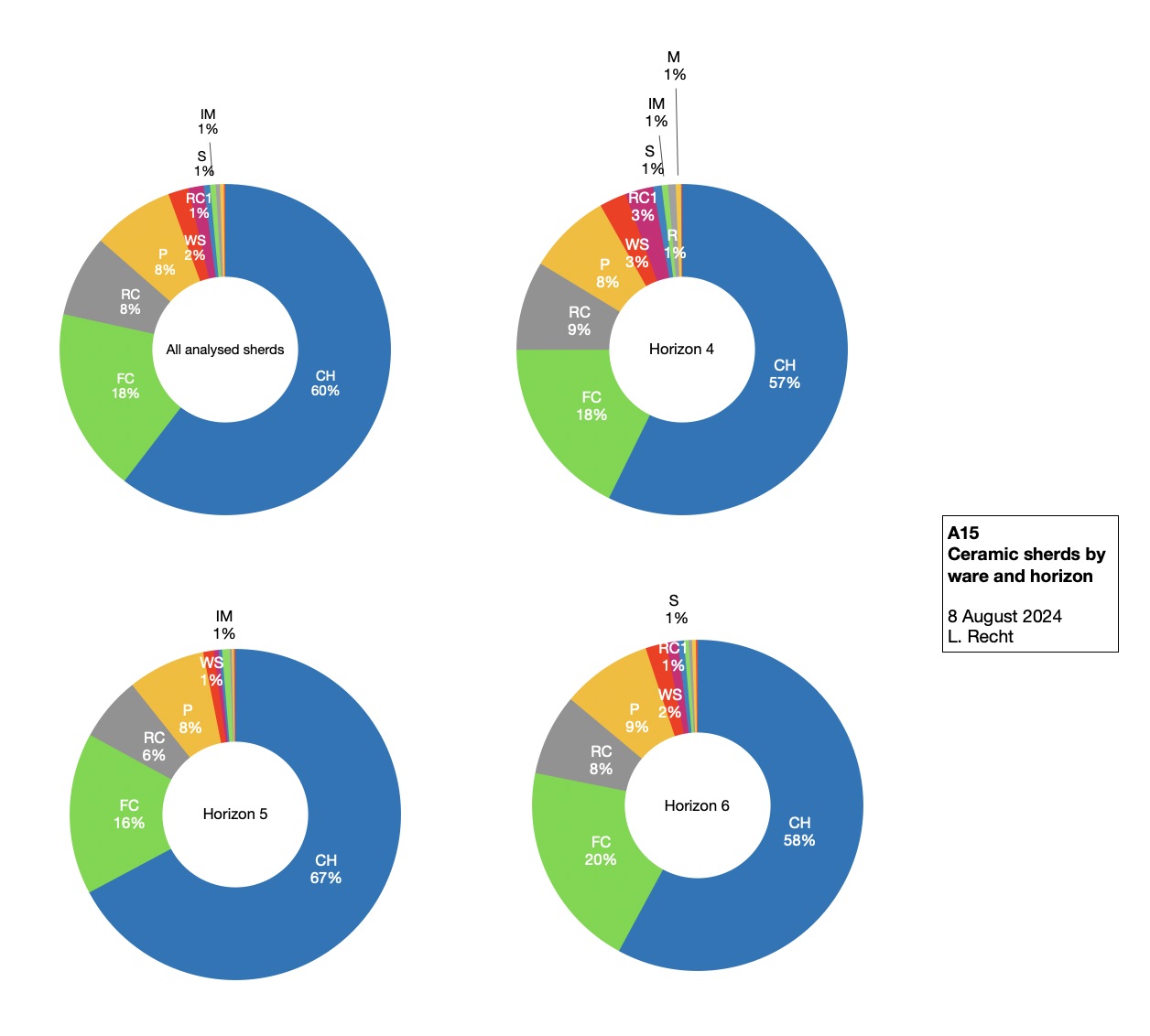
*Note on charts: wares with fewer than a total of 50 sherds from all strata have not been included in the charts (Fine Pebble Temper Ware (FP): 41; Bi-Color Ware (BC): 28; Khabur Ware (H): 25; NIN: 15; Kura-Araxes Ware (ETC): 10; Imitation Bi-Color Ware (IBC): 5; Chaff or Fine Chaff Temper Incised (INC): 4; HF: 1).
A15 colormod
A number of sherds from A15 was included in the colormod project, which investigated the composition of different wares using thin sections.These illustrate Chaff Temper Ware, Fine Chaff Temper Ware, Red Orange Calcite Temper Ware, Fine Red Orange Calcite Temper Ware, Pebble Temper Ware, and Fine Pebble Temper Ware.
Examples of Chaff Temper Ware:
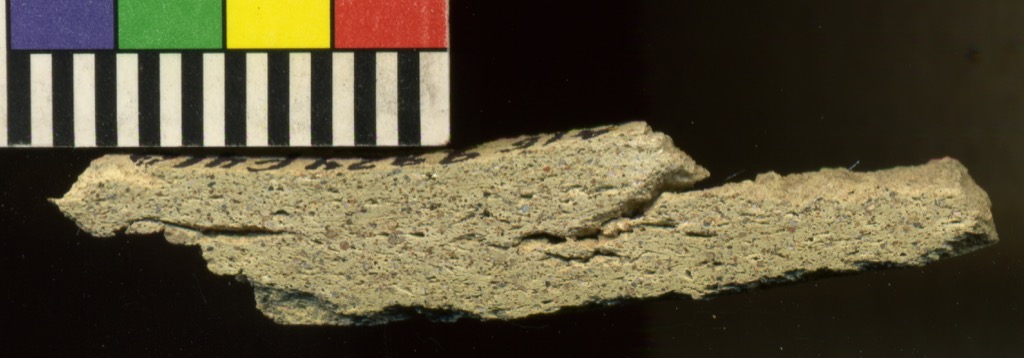
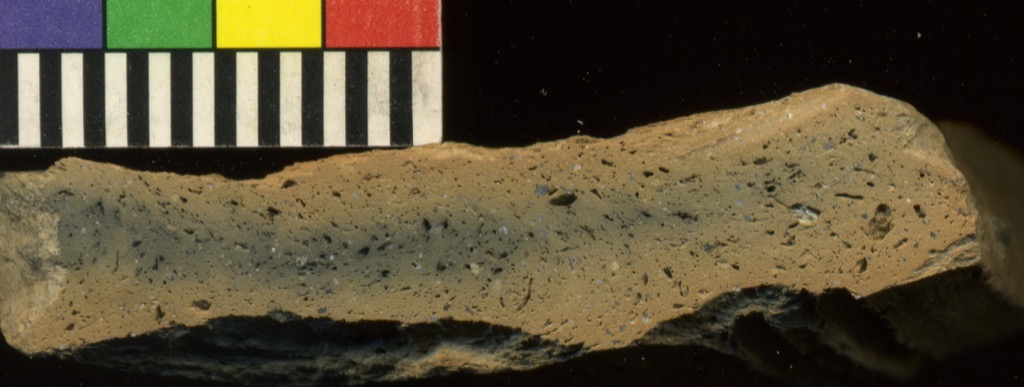
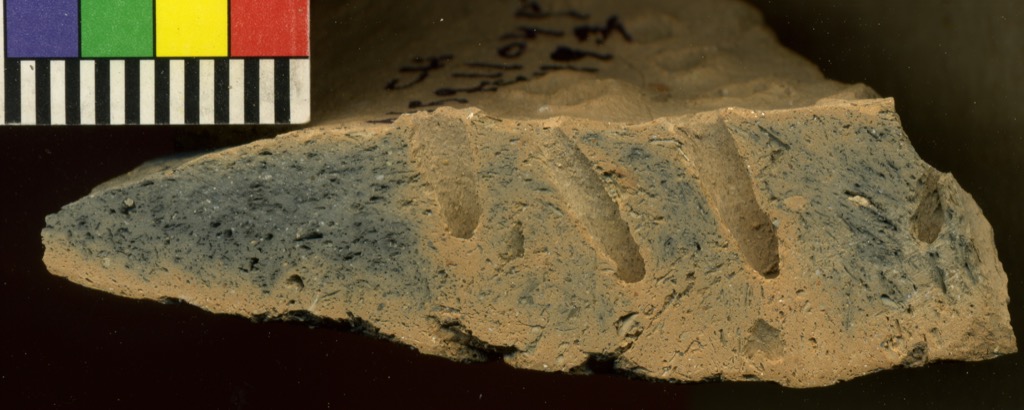
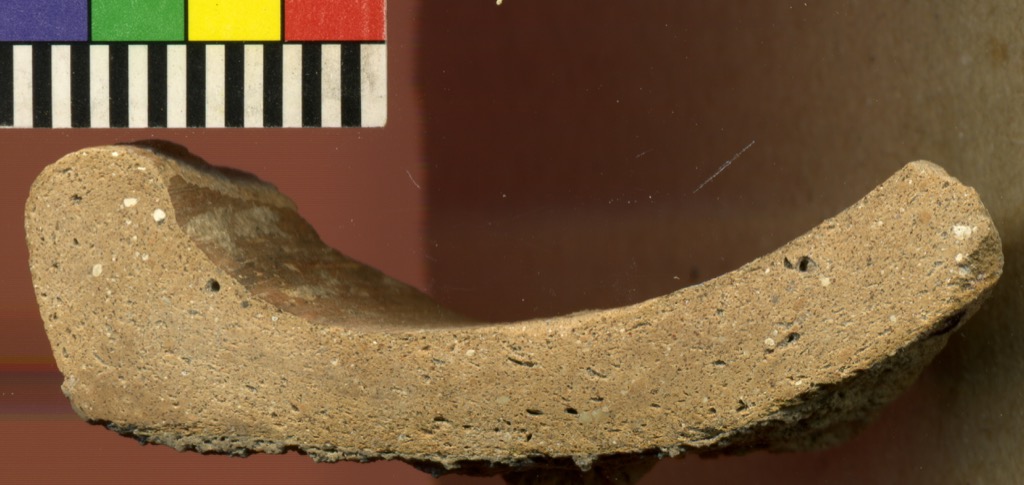
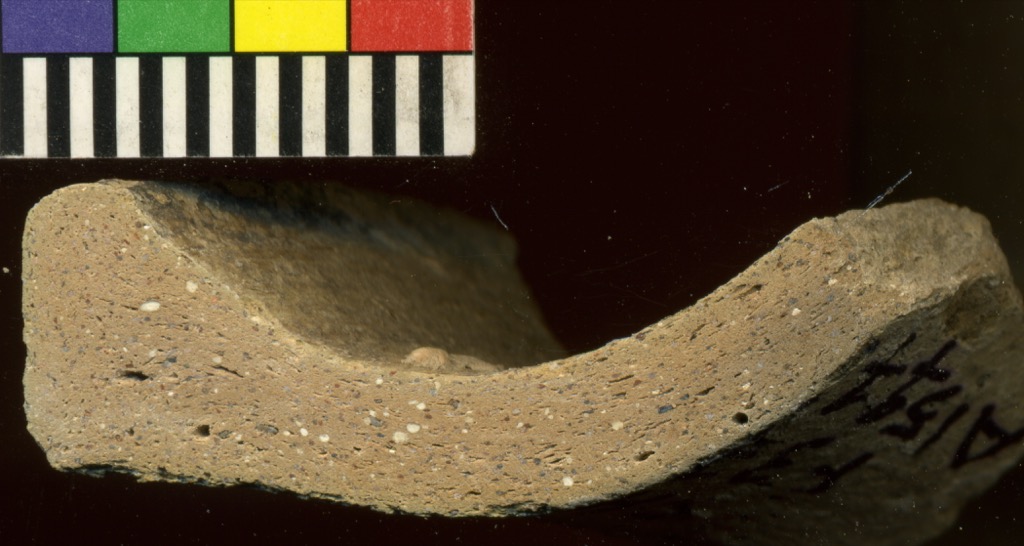
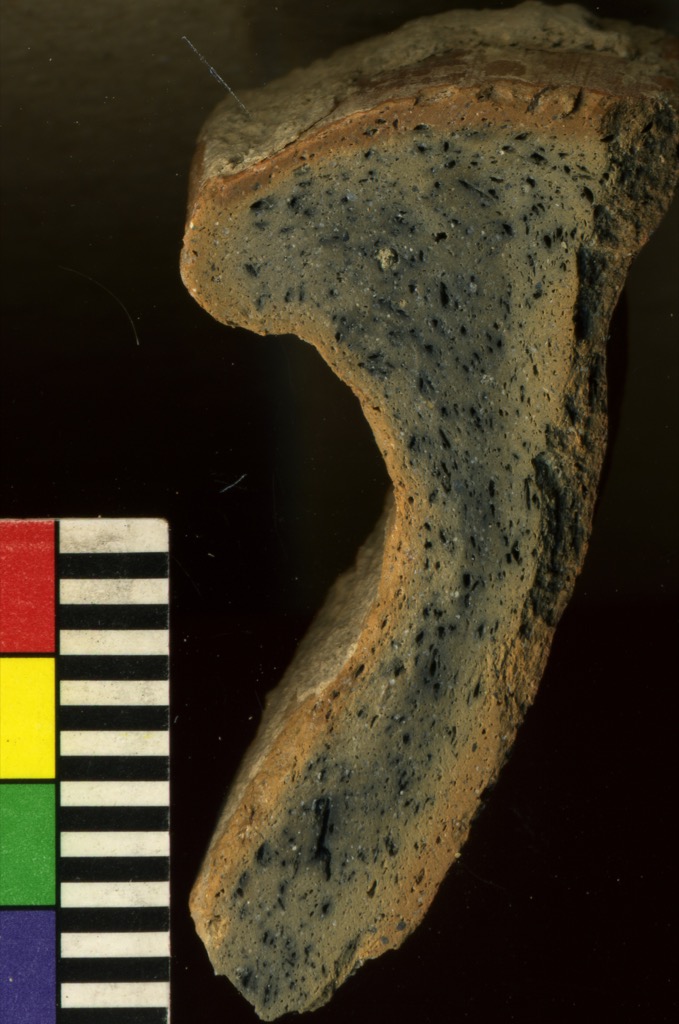
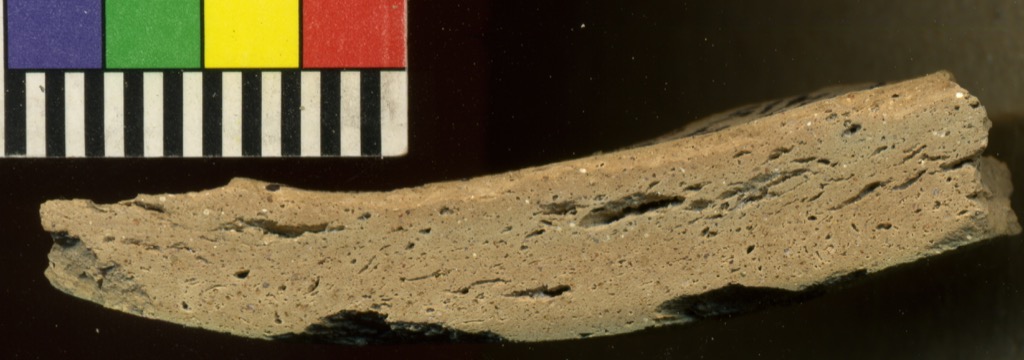
Examples of Fine Chaff Temper Ware:
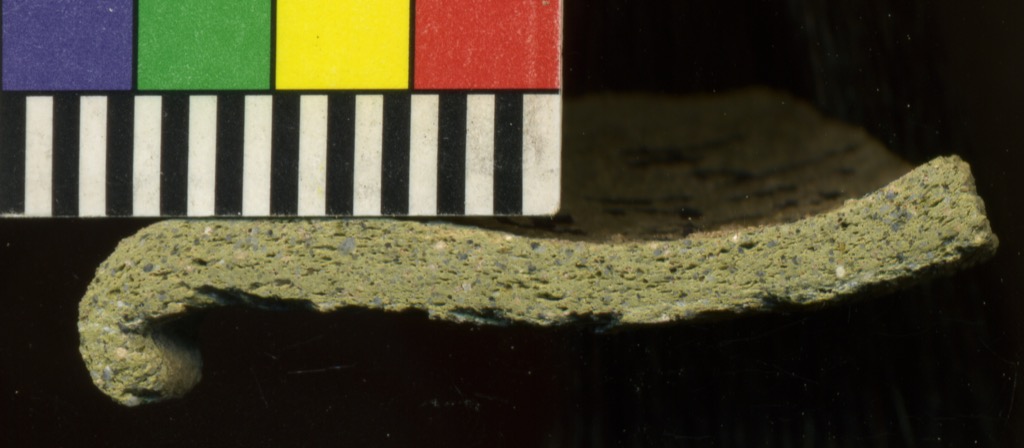

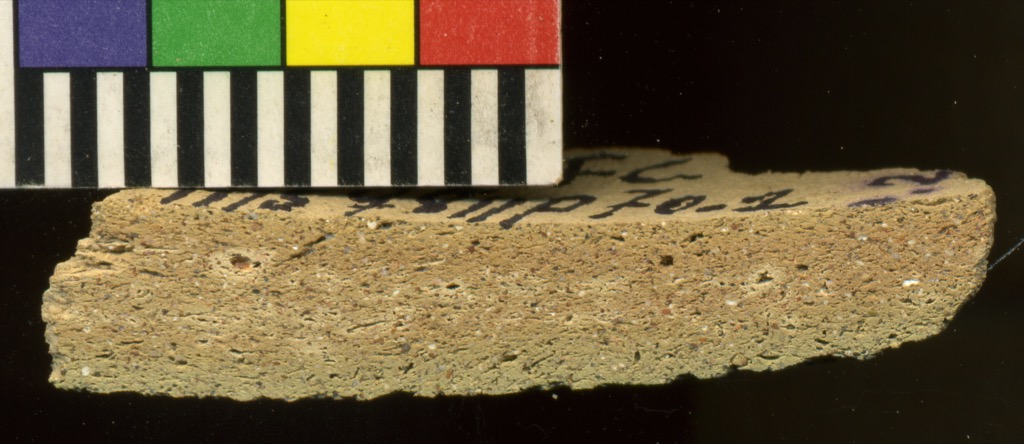
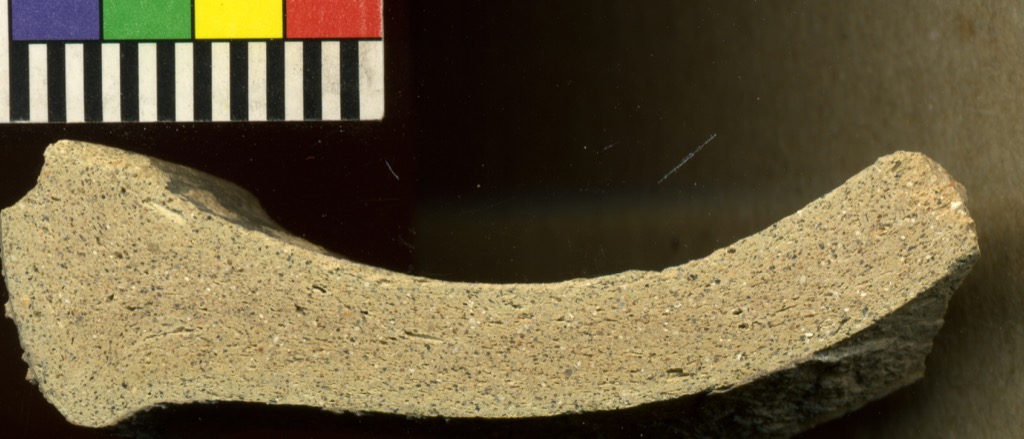
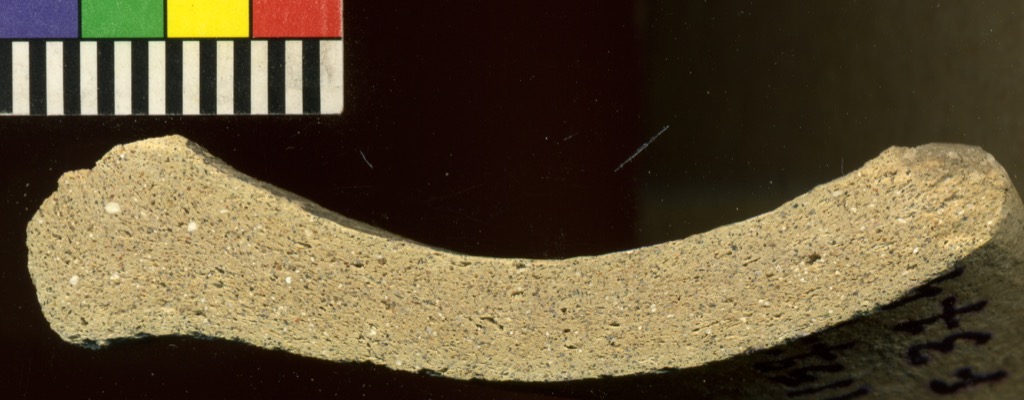
Examples of Red Orange Calcite Temper Ware:
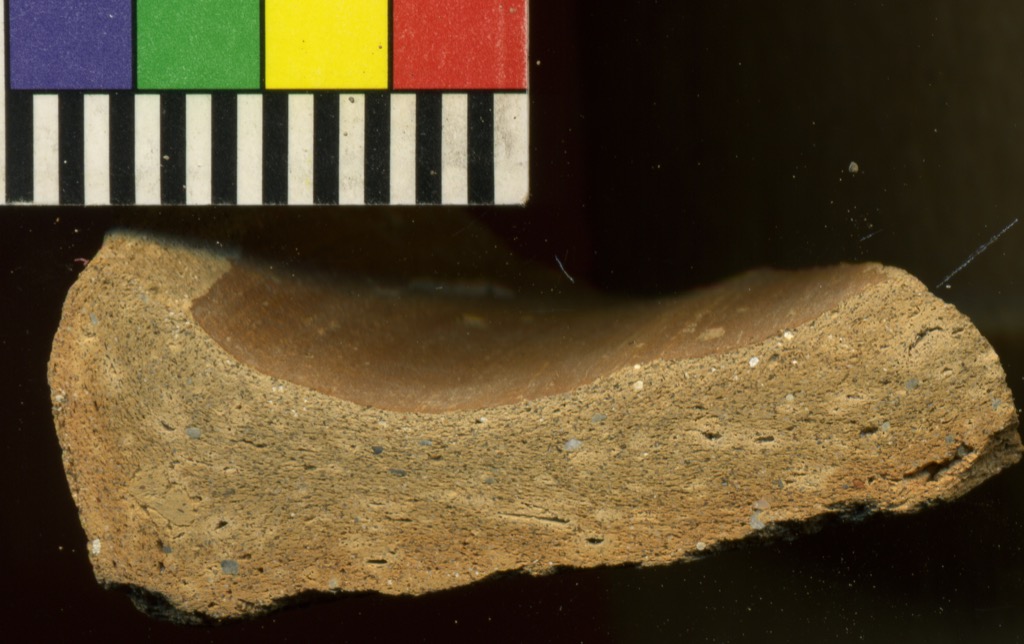
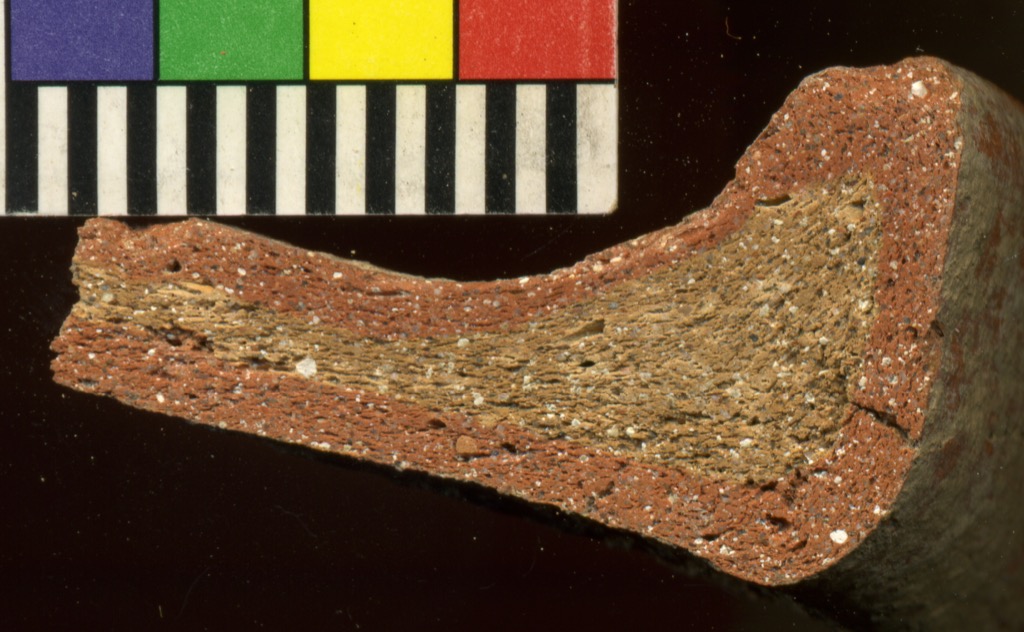
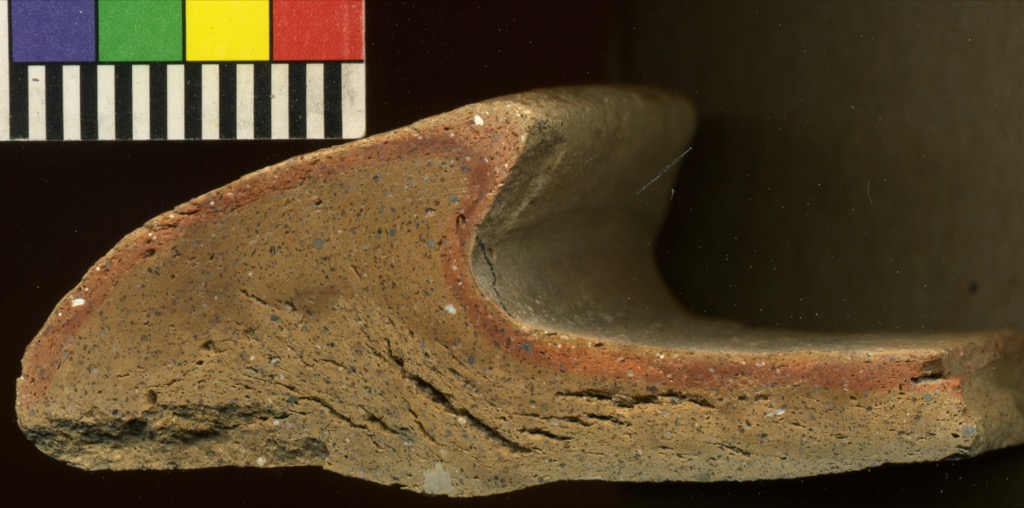
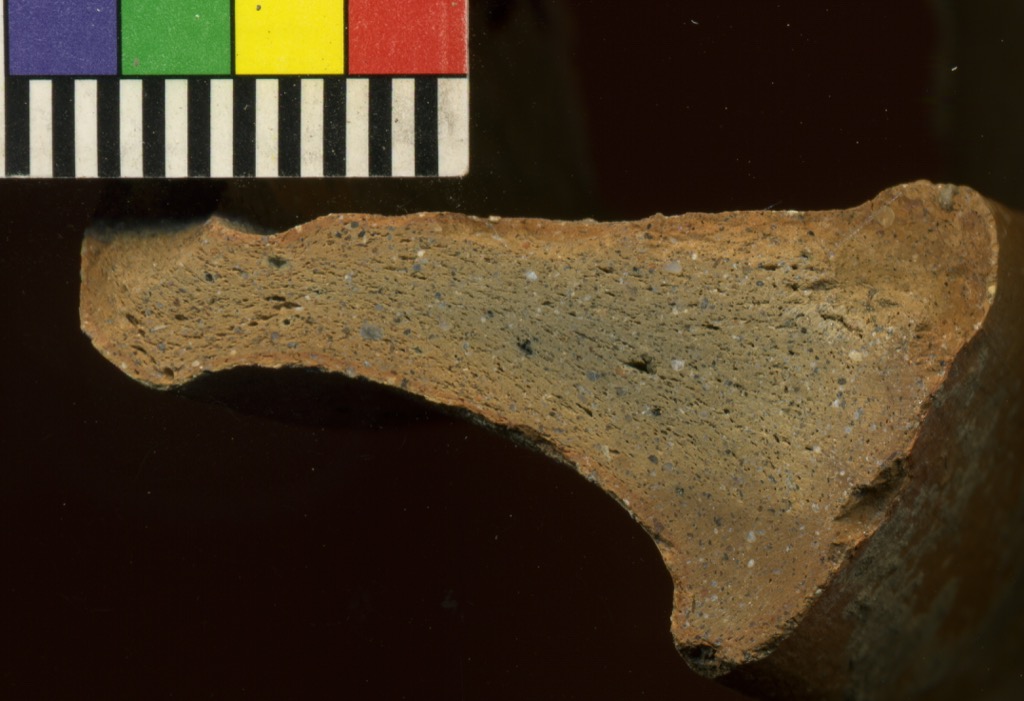
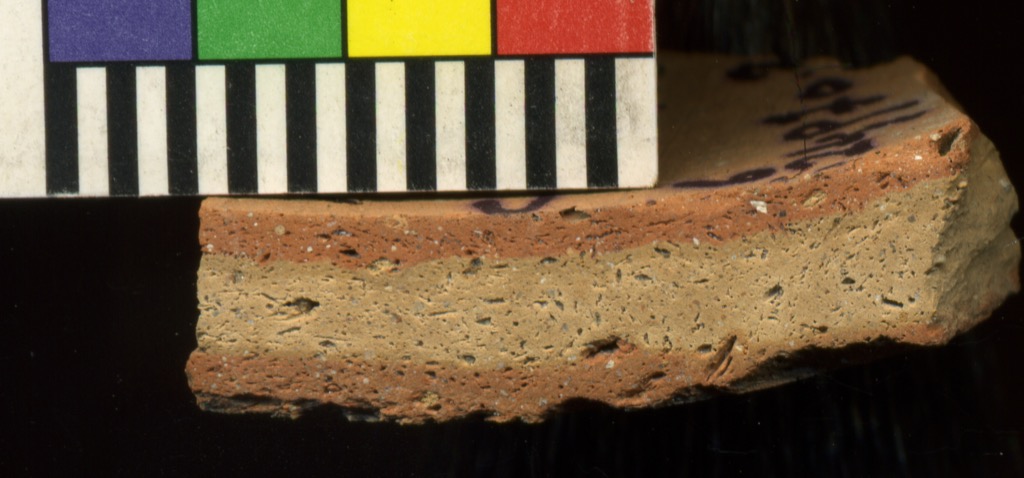
Examples of Fine Red Orange Calcite Temper Ware:
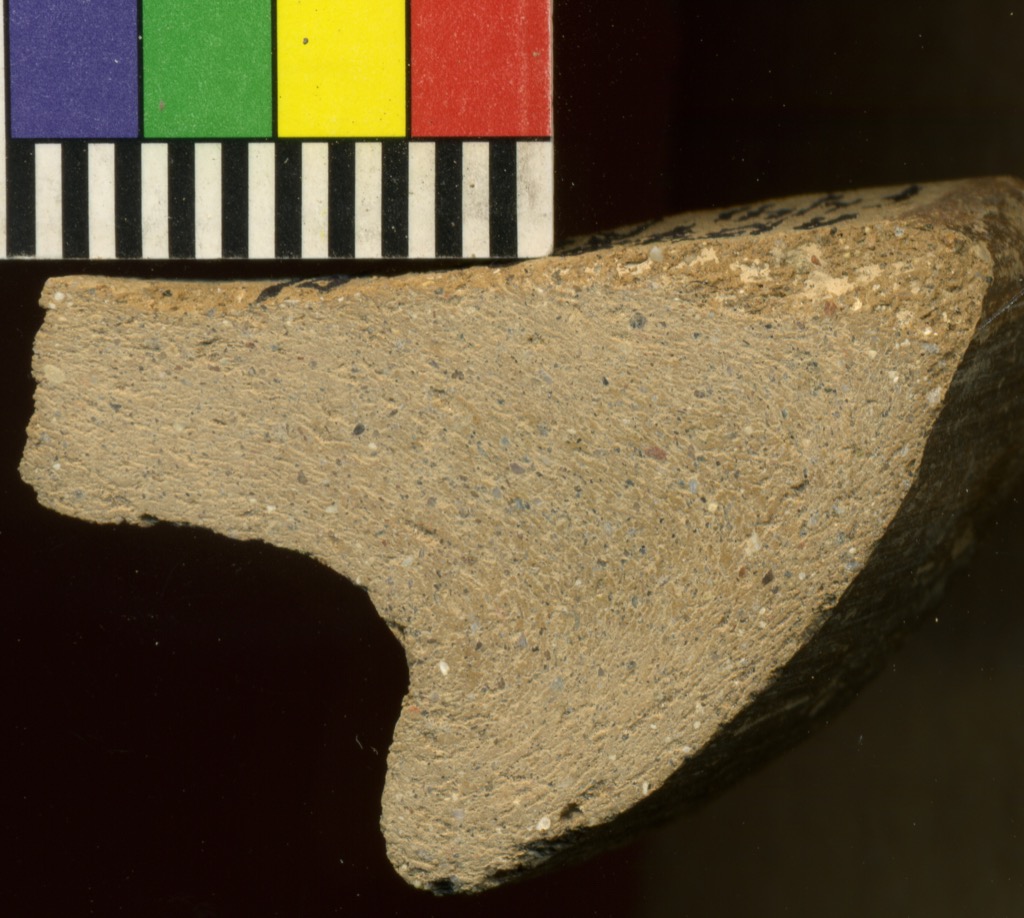
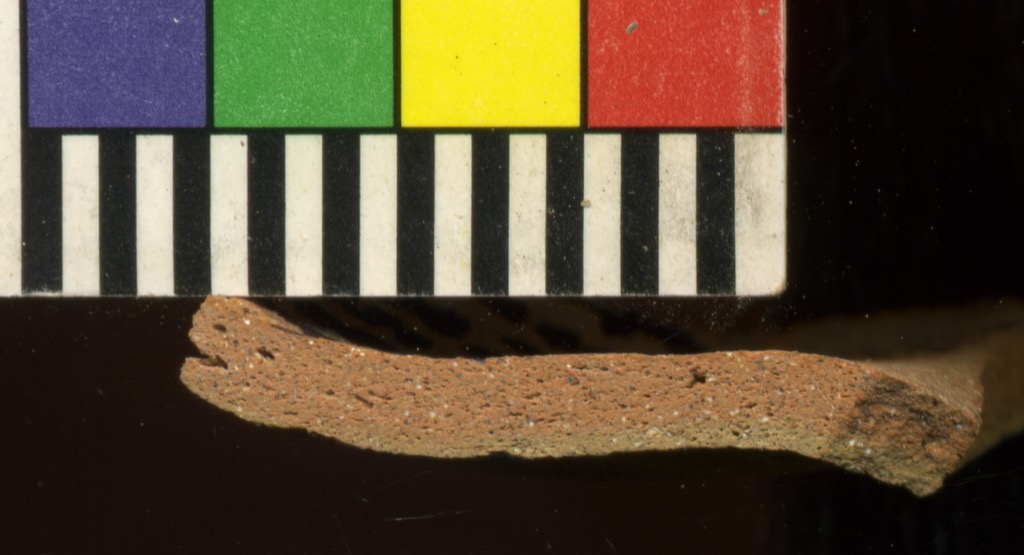
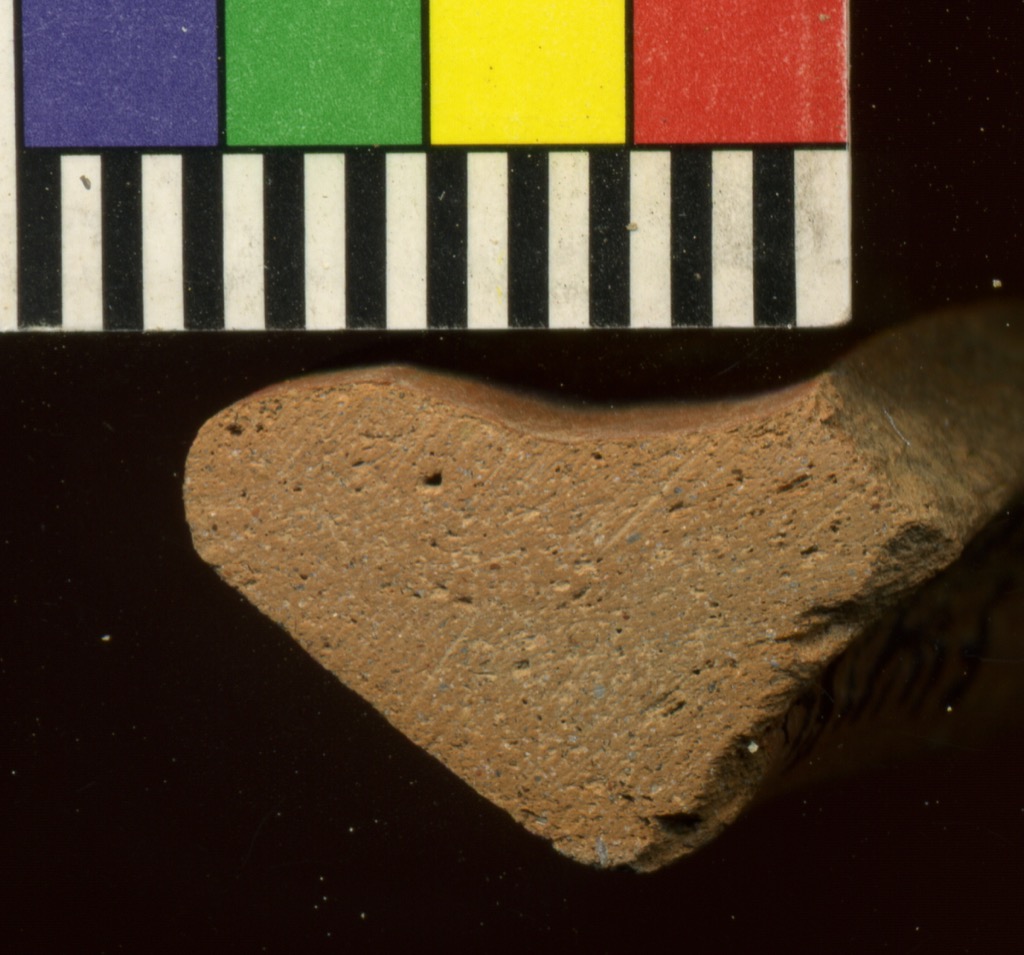
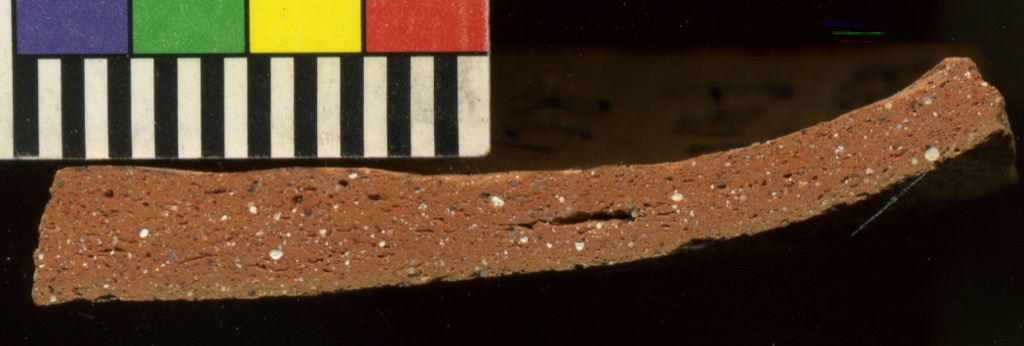
Examples of Pebble Temper Ware:
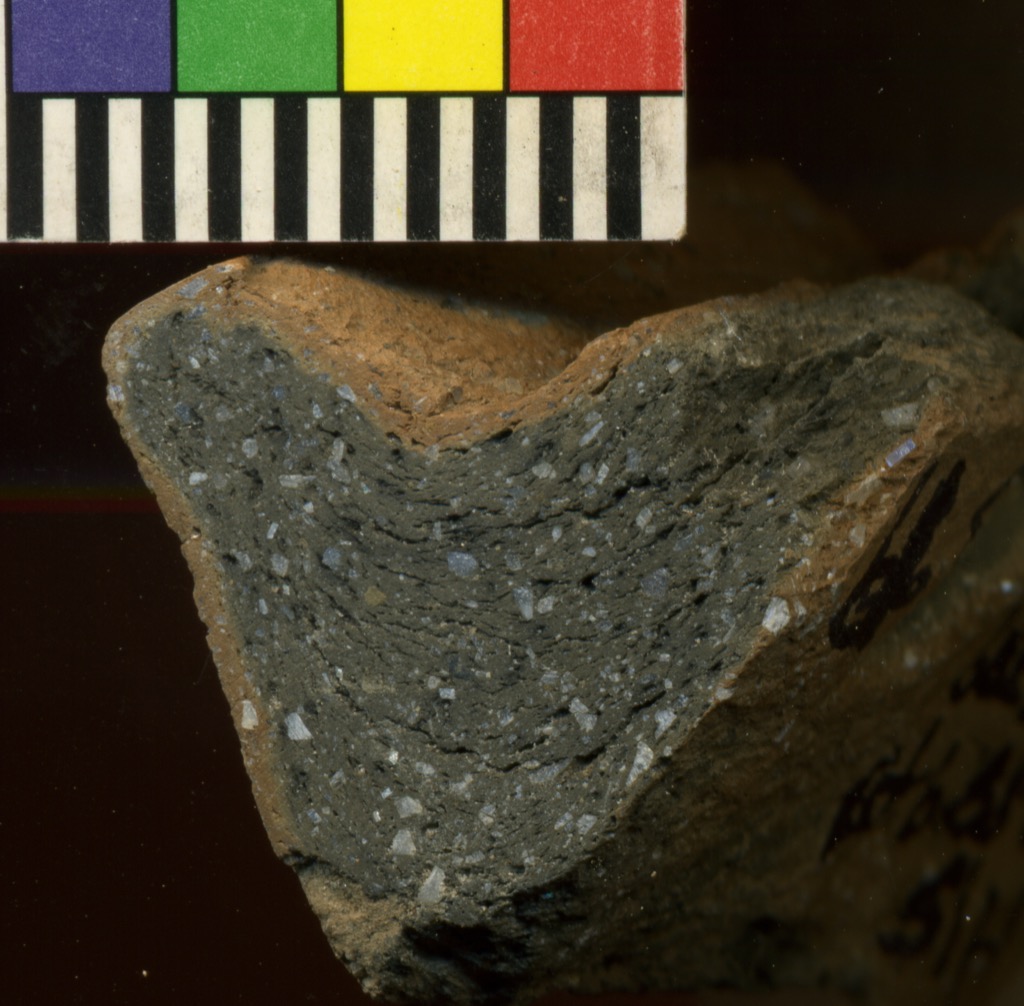
Examples of Fine Pebble Temper Ware:
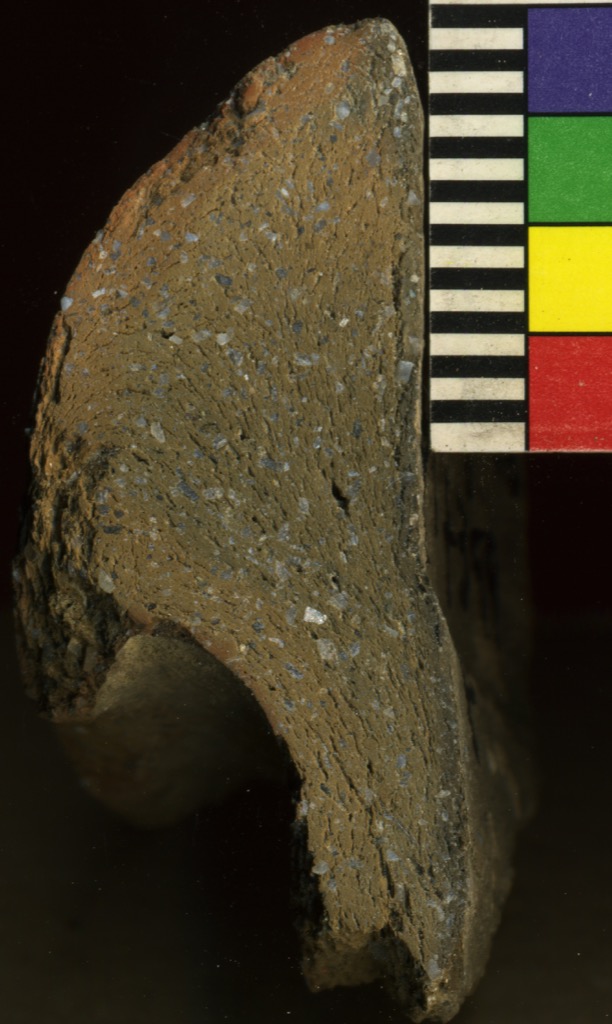
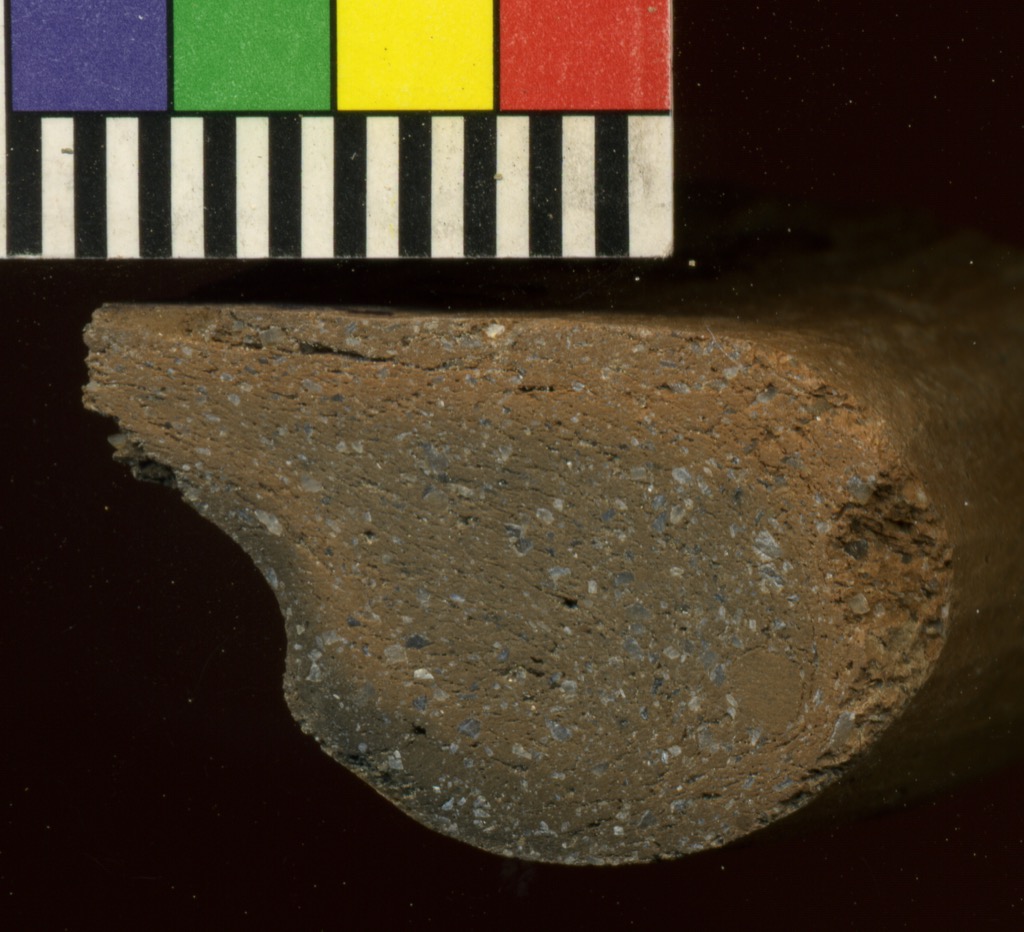
Shapes
The shape (diagnostic) sherds from the entire A15 assemblage represent an almost equal number of open and closed vessels, with a total of 2351 jars, 2244 bowls and 654 cups. There are also quite a few pots (323), but lower numbers of worked disks, plates, strainers, bottles, stands, pitchers and other shapes.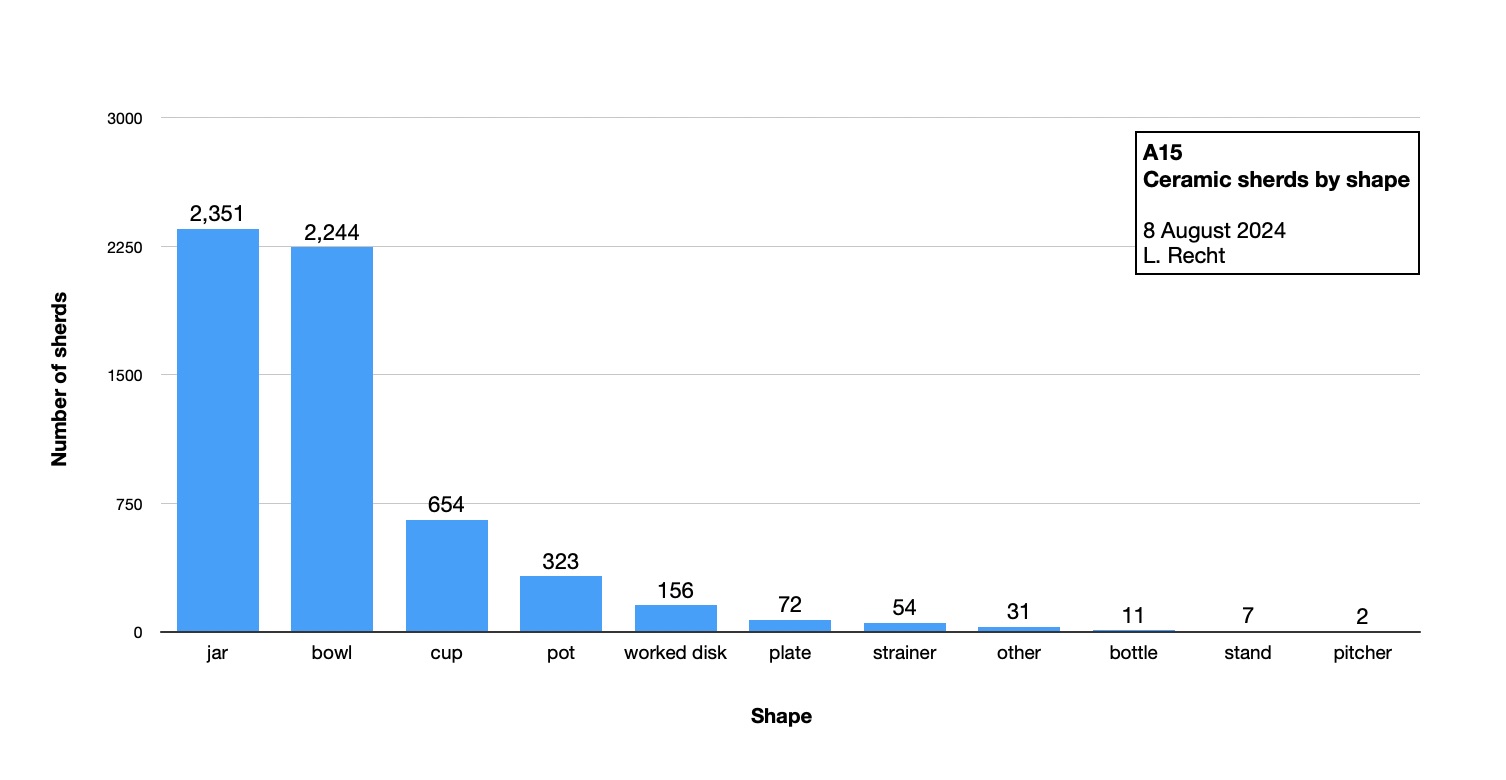
There is some fluctution in the preferred shapes in the periods represented - during Horizon 4, the open shapes of bowls and cups (with a total of 62%, to which can also be added small amounts of plates) far outnumber those of jars (with only 30%). This changes in Horizon 5 and 6, where jars make up nearly half the assemblage at 48% and 45%, respectively, at the expense of cups and bowls. Pots, although always in lower numbers, increase in importance, from 2% in Horizon 4 to 5% in Horizon 5, and then to 10% in Horizon 6.
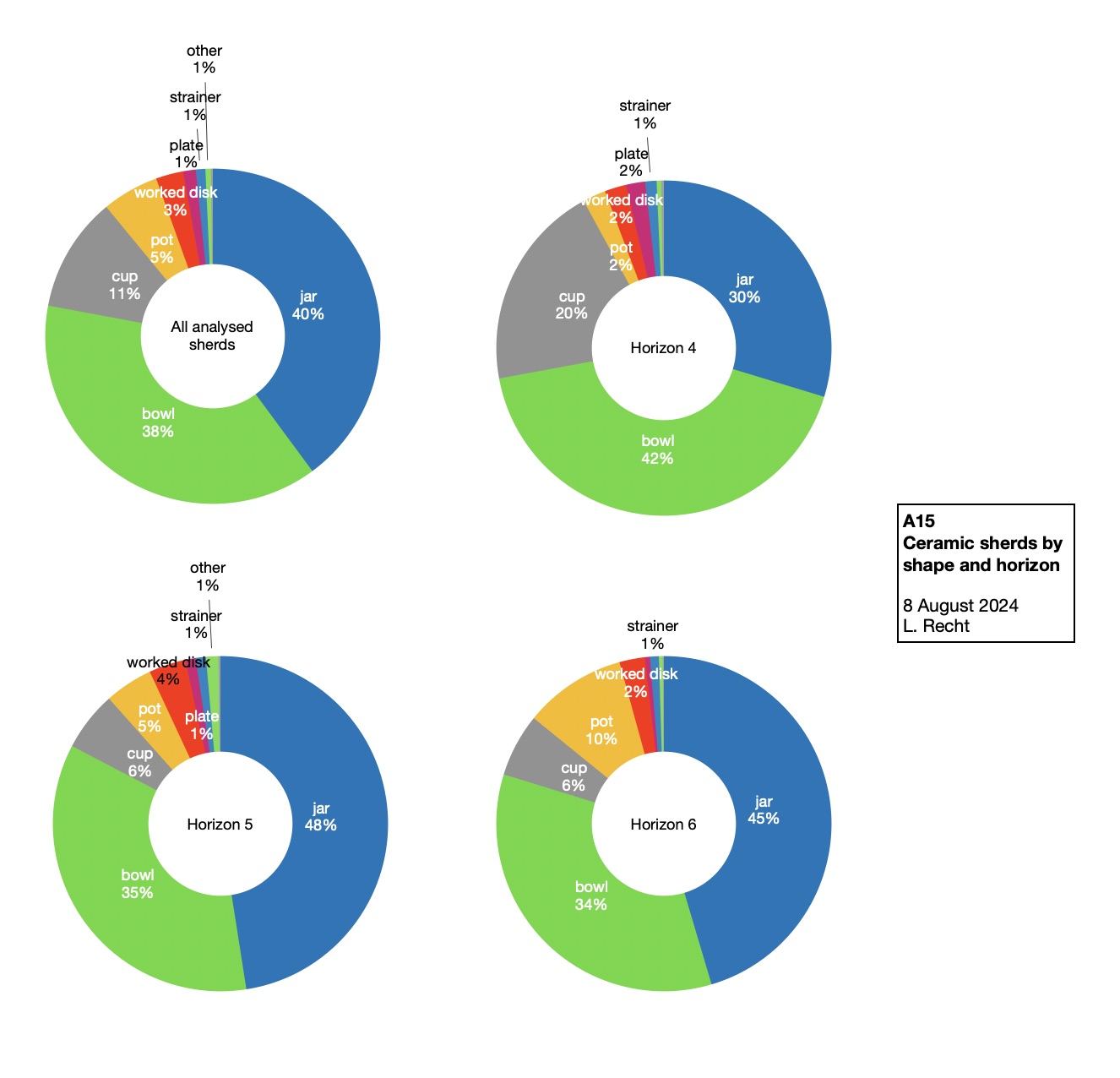
The categories of bowls and jars cover a great range of shapes and sizes, reflecting a variety of functions. These have been classified in detail in the typology of the CERAMICS book (see especially the section 'Shapes by horizon'). The types of bowls found in A15 include carinated bowls (a quite common Khabur period type), deep bowls, round and straight sided, and other types. There are rare examples of hammer-rim bowls, typical of the Late Chalcolithic 3 period. There are clear changes in the shapes preferred and produced over the periods represented, as is also the case for the jars and cups. By far the most common types of jars present are necked jars, further sub-divided into straight and flaring necked (with much overlap in types); other types of jars include hole mouth (which are often large vessels), shouldered and other types. Cups appear in two main versions: the majority are of the conical type, while a smaller amount are characterised as 'other'.
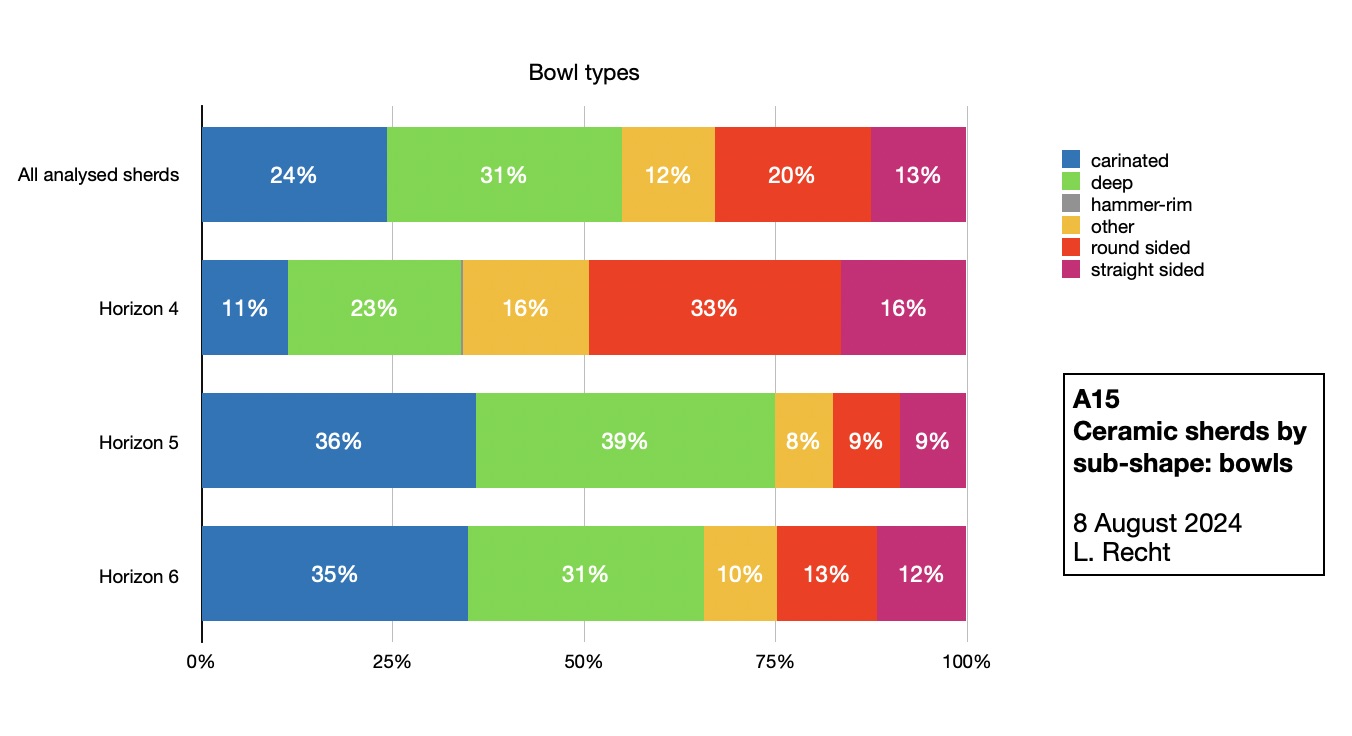
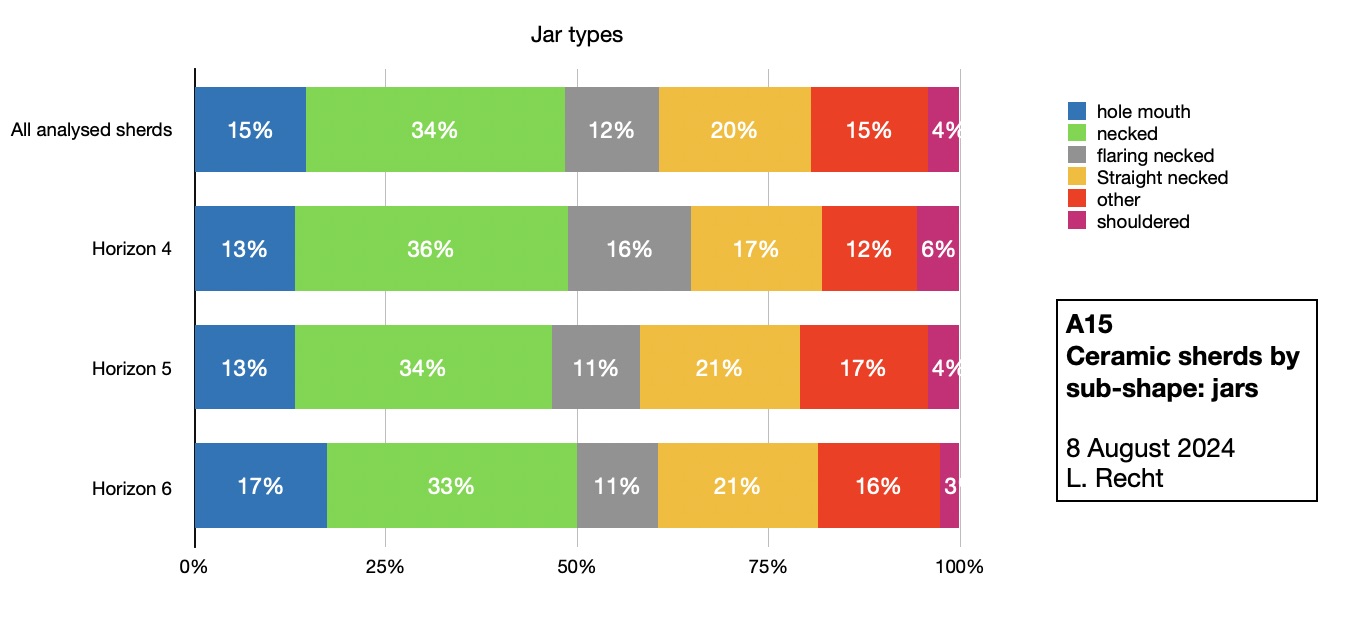
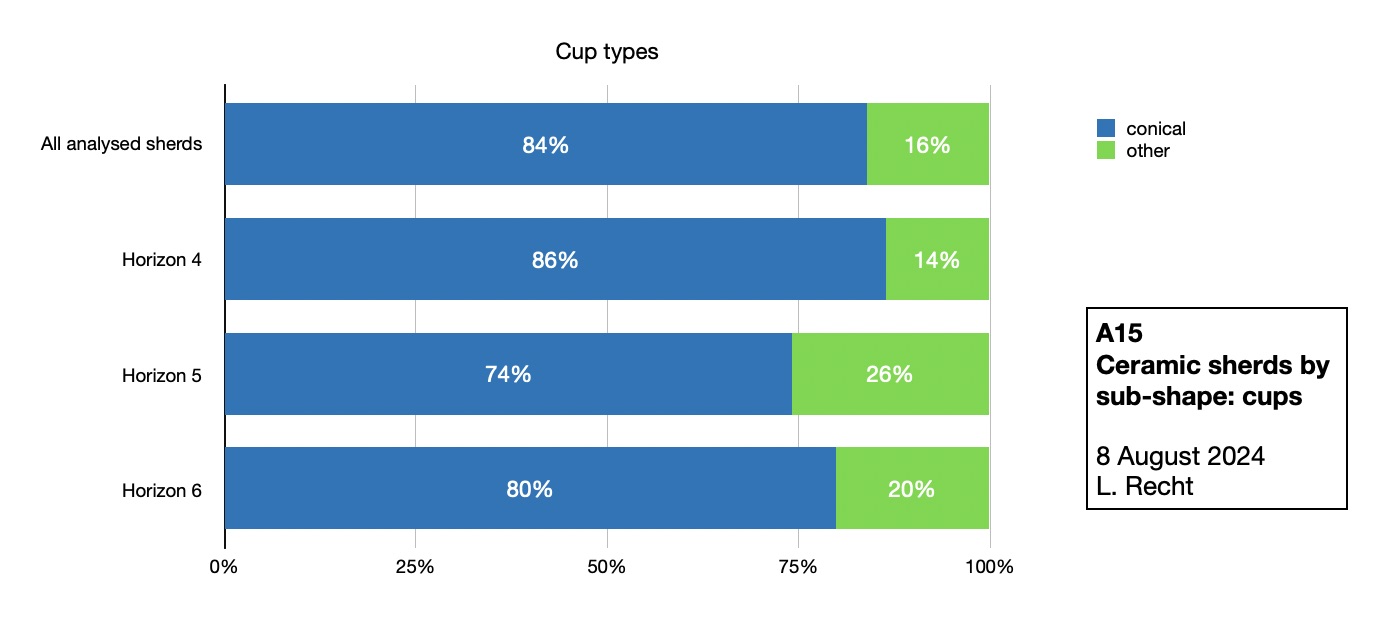
Decoration
A range of decoration types are present on the ceramics from A15, with painted, incised and applied decoration. The most common is the painted versions typical of Khabur-period pottery (especially bands of dark red, brown or dark brown to black paint).Examples of Khabur-period painted sherds:
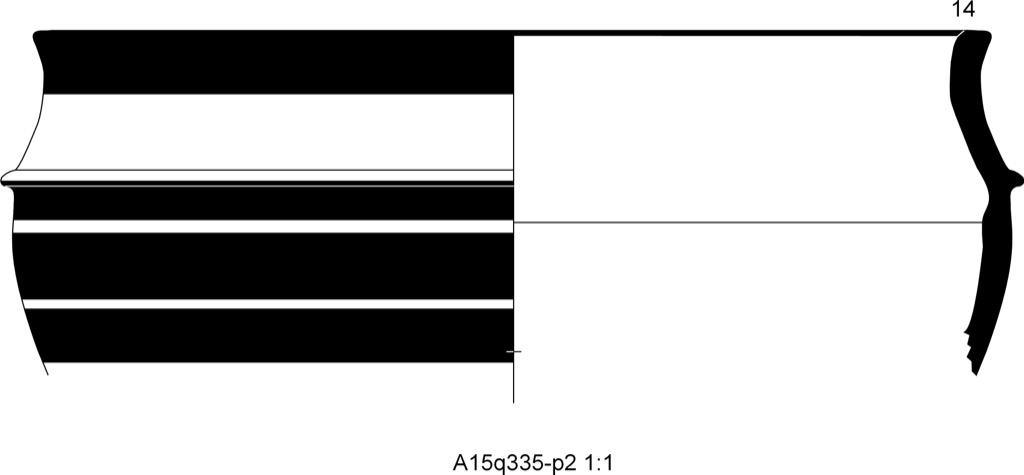
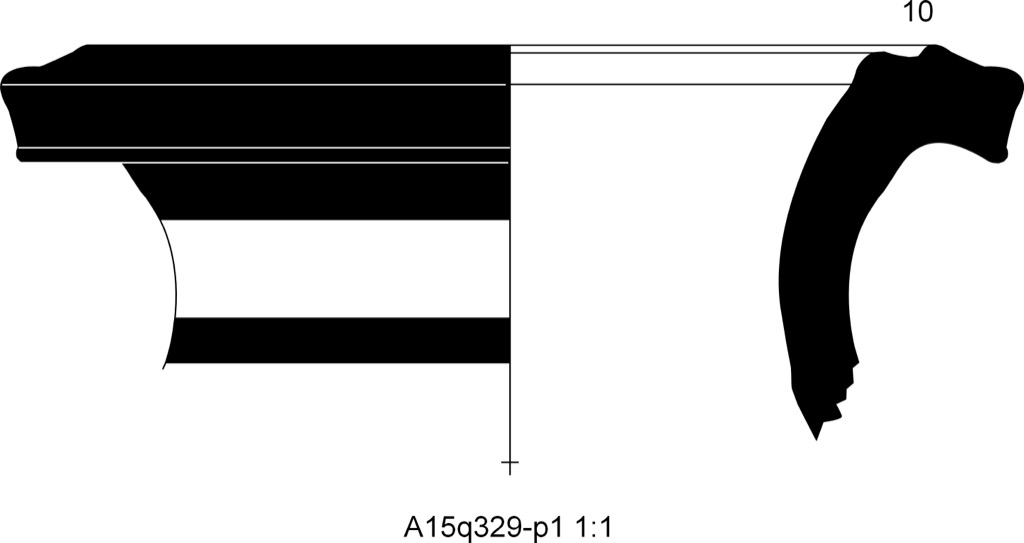
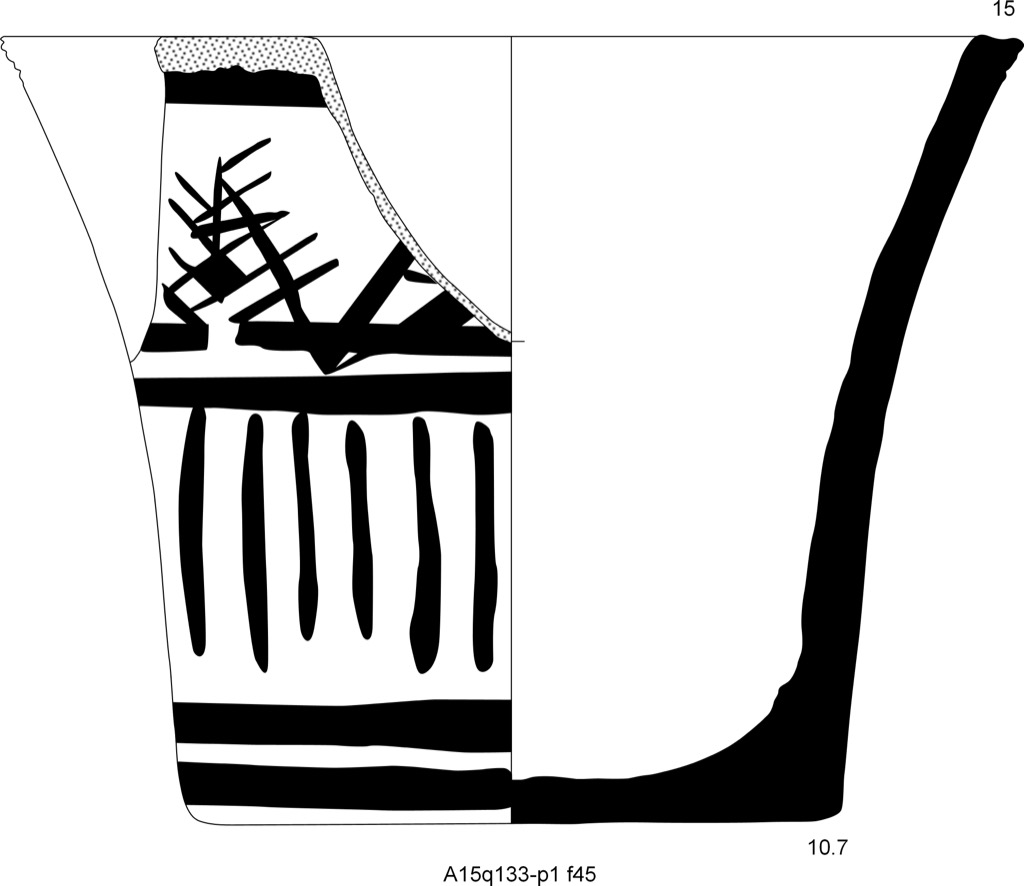
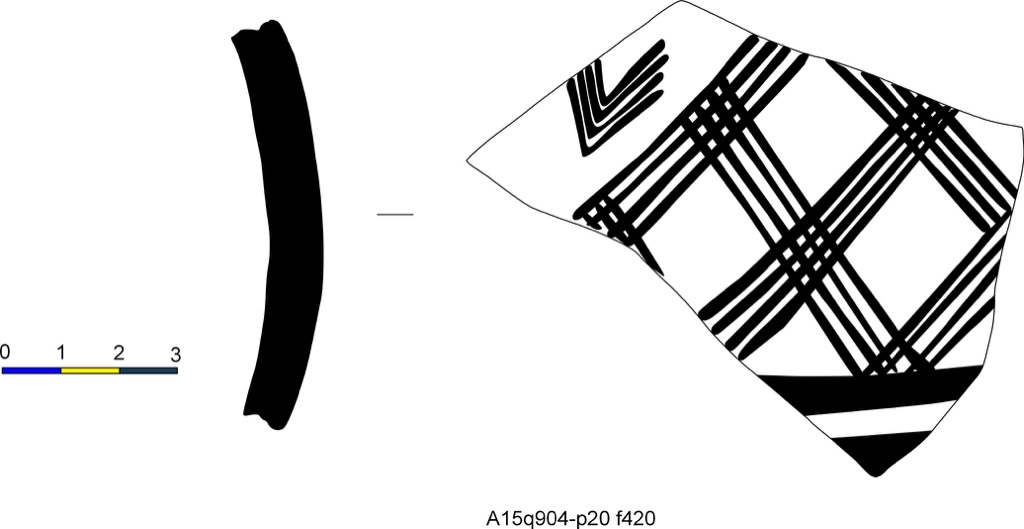
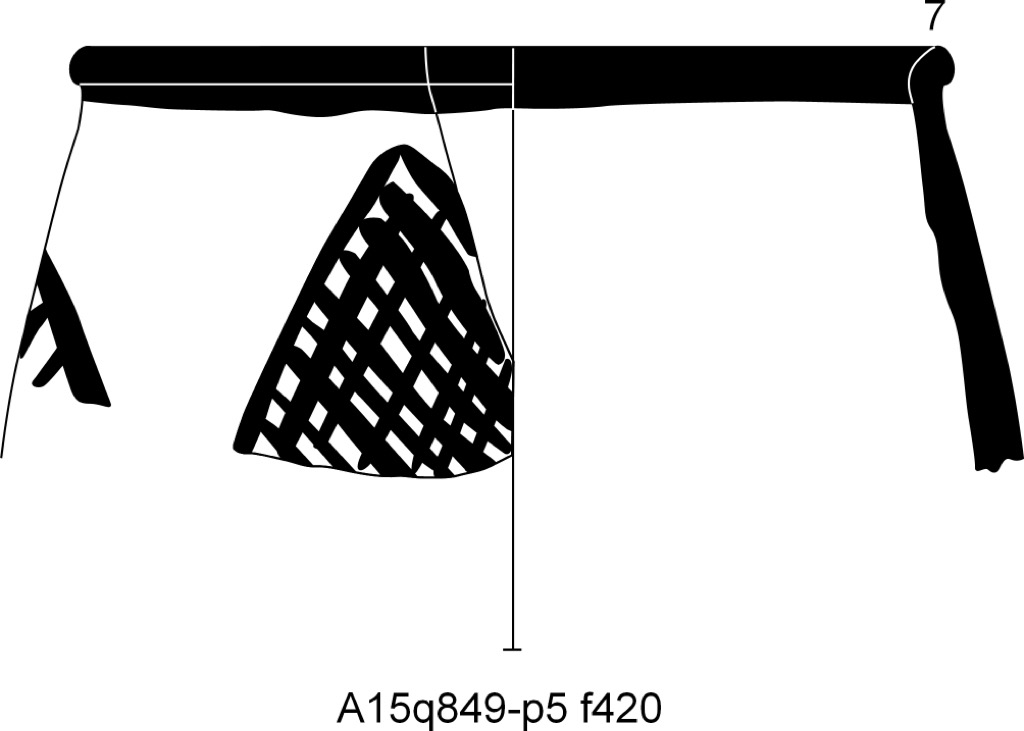
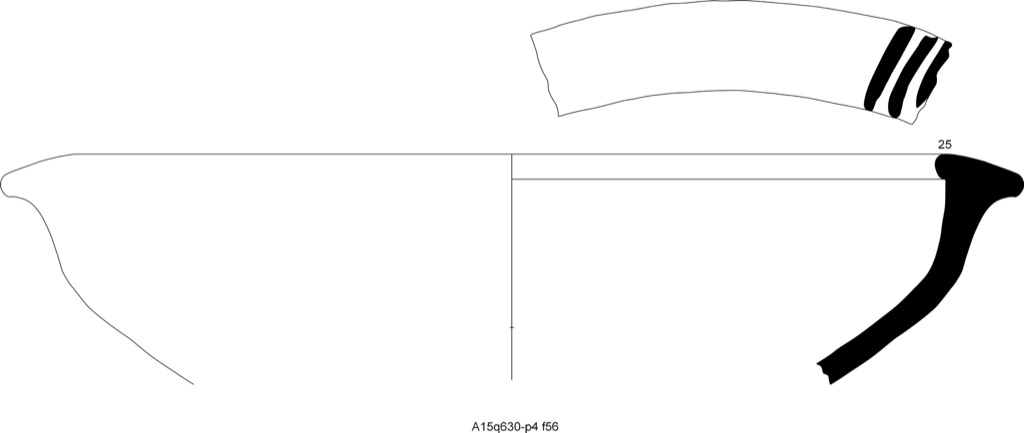
Examples of incised sherds include parallel incised lines on the top of the rim, but more commonly are found as horizontal and wavy lines.
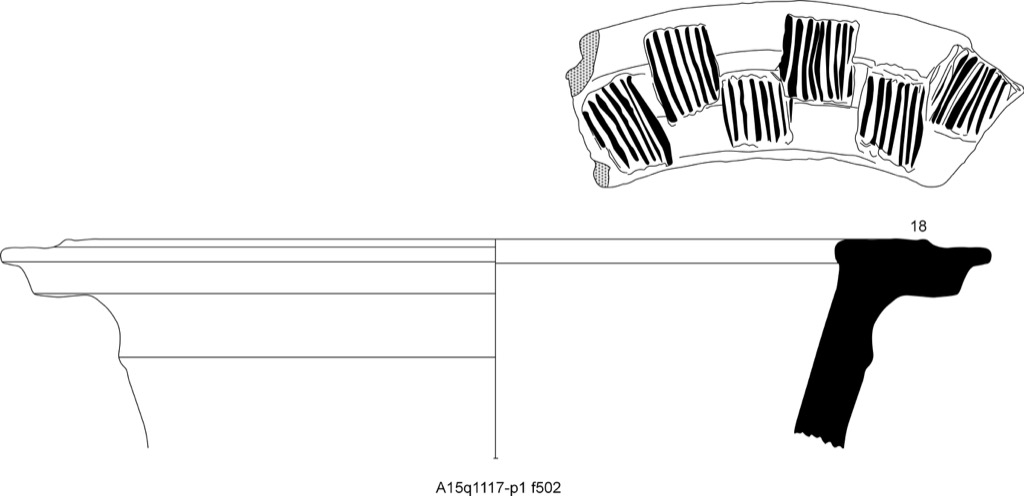
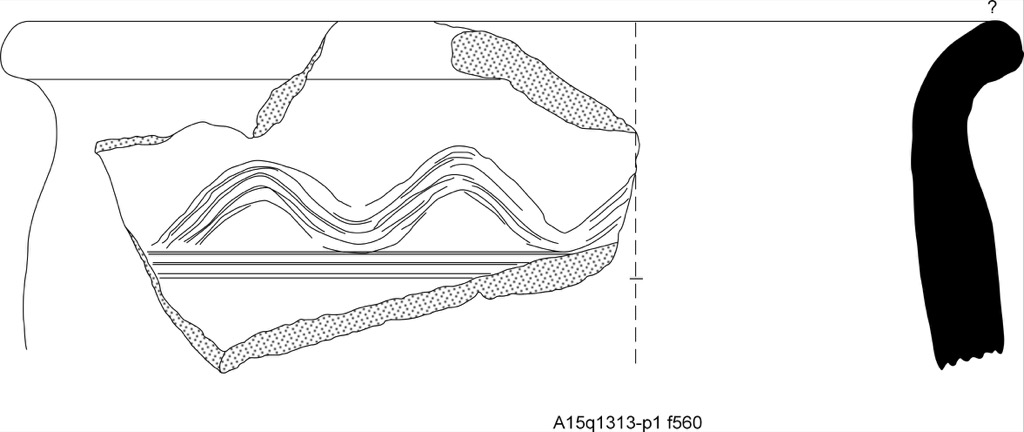
Several decoration types can be found combined, especially painted and incised, but also as incised and applied.
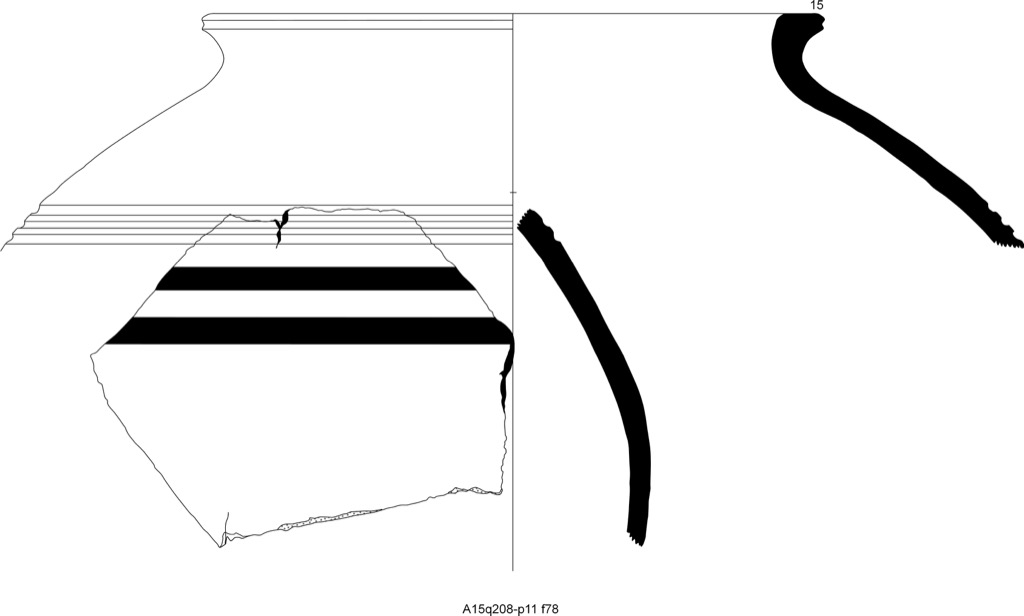
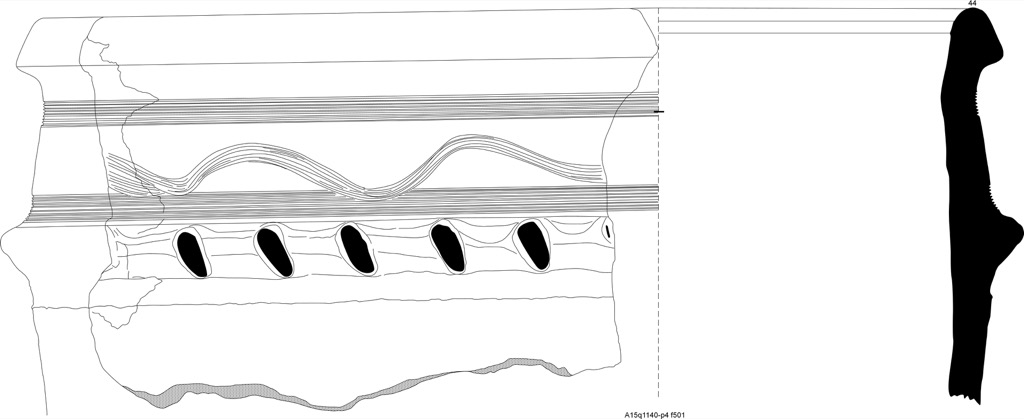
There are also some more unusual examples, including one with applied 'snake' decoration (A5), usually believed to be associated with ritual vessels, and sherds incised with figural scenes of humans and animals.
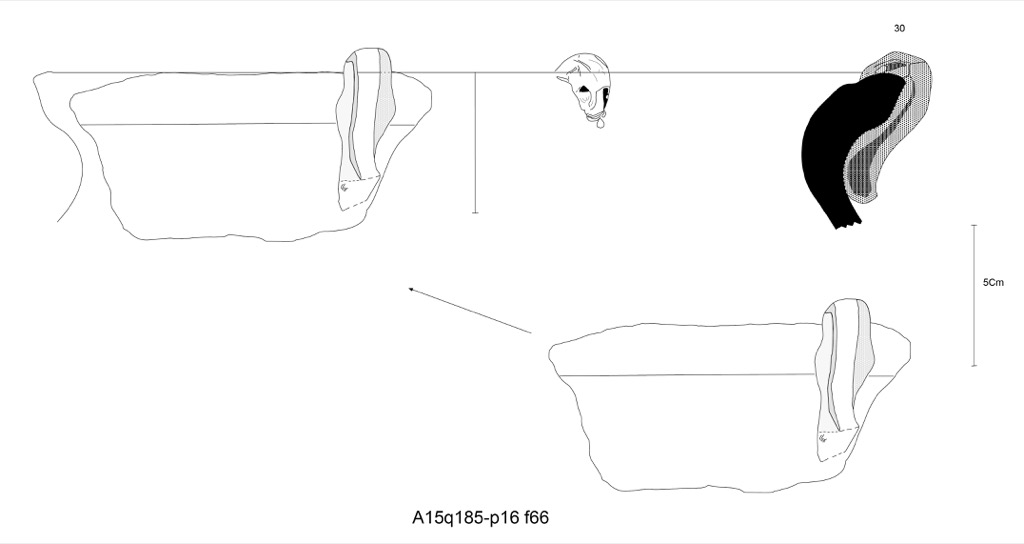
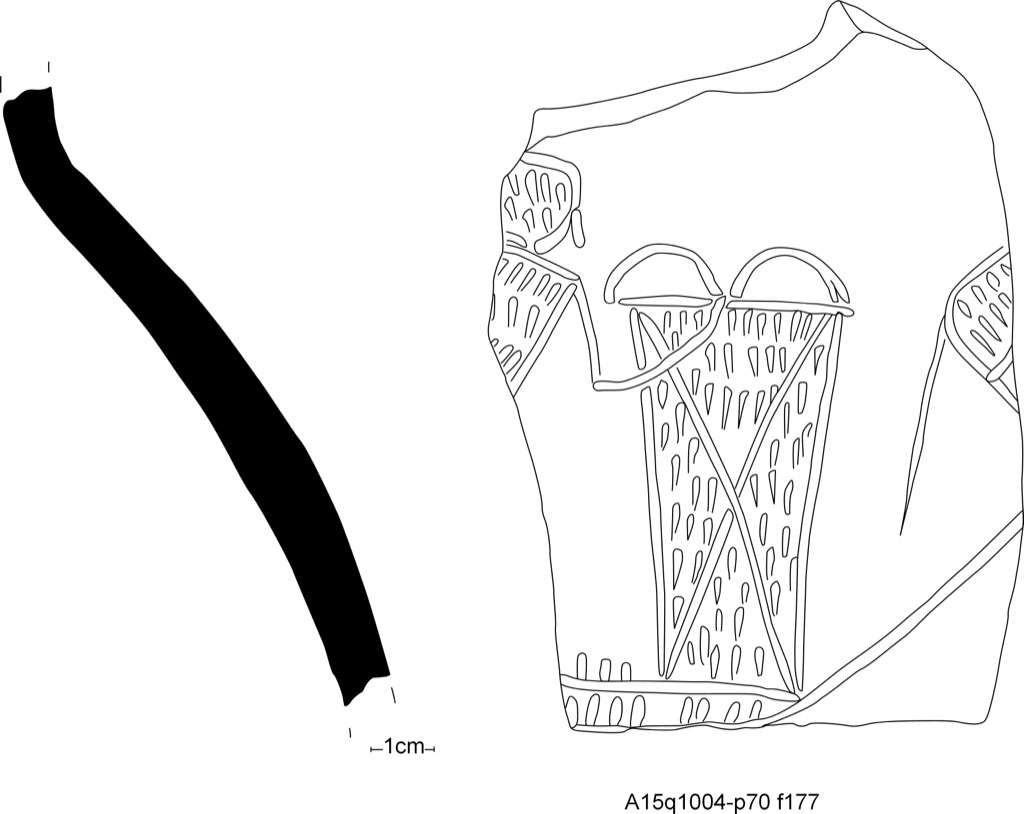
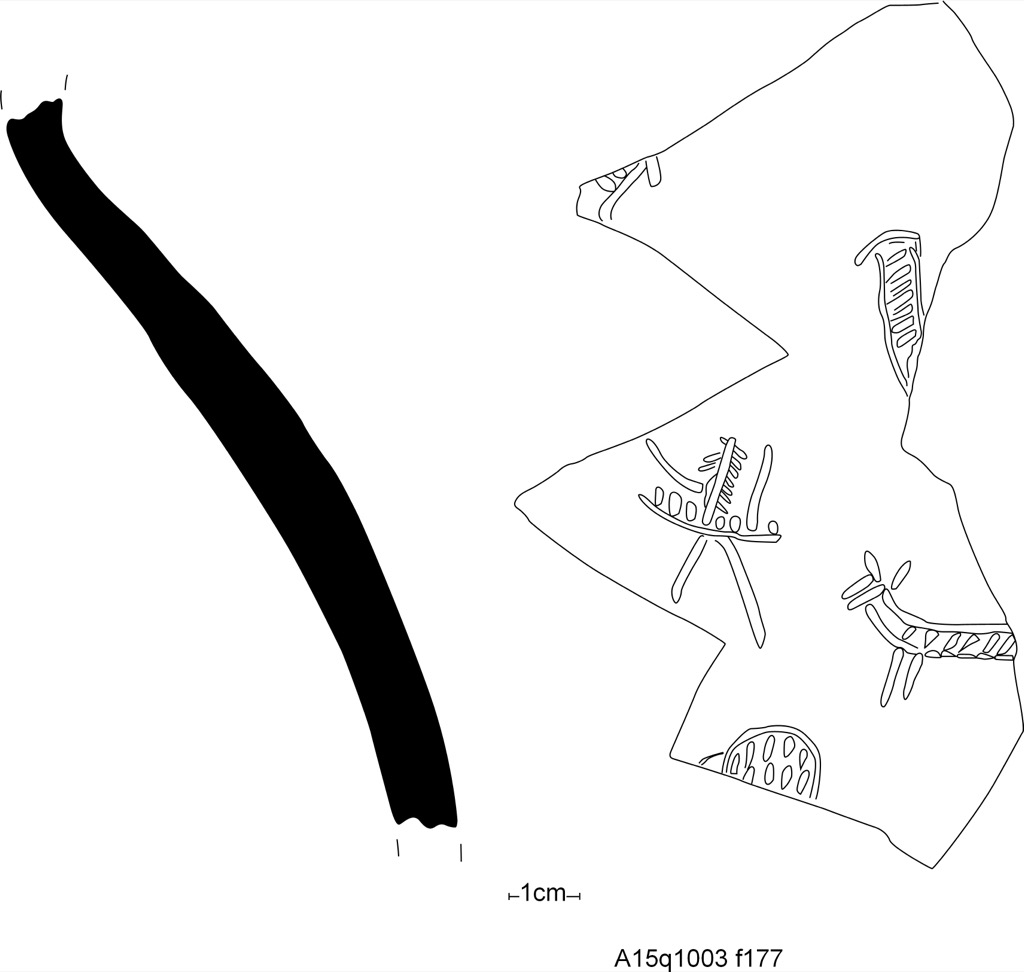
Complete vessels
A high number of complete vessels were found in A15. These especially come from burials (mostly Khabur-period) and caches of vessels, such as a34 (illustrated in assemblage b1) and the kiln material of a31.
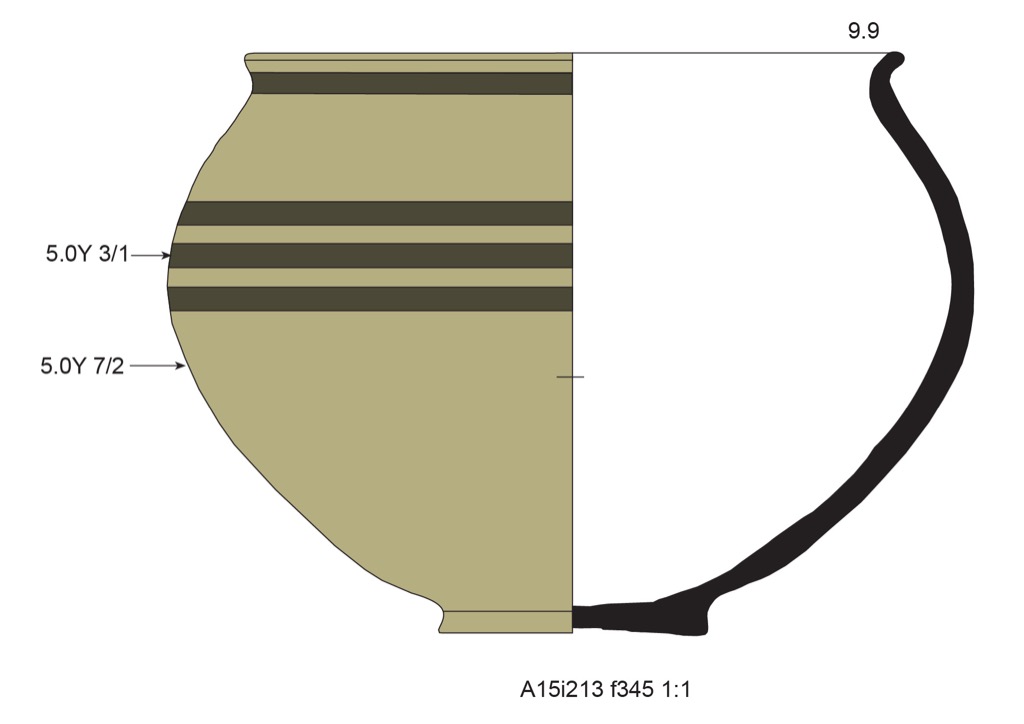
A15.213 Painted pot from a31 |
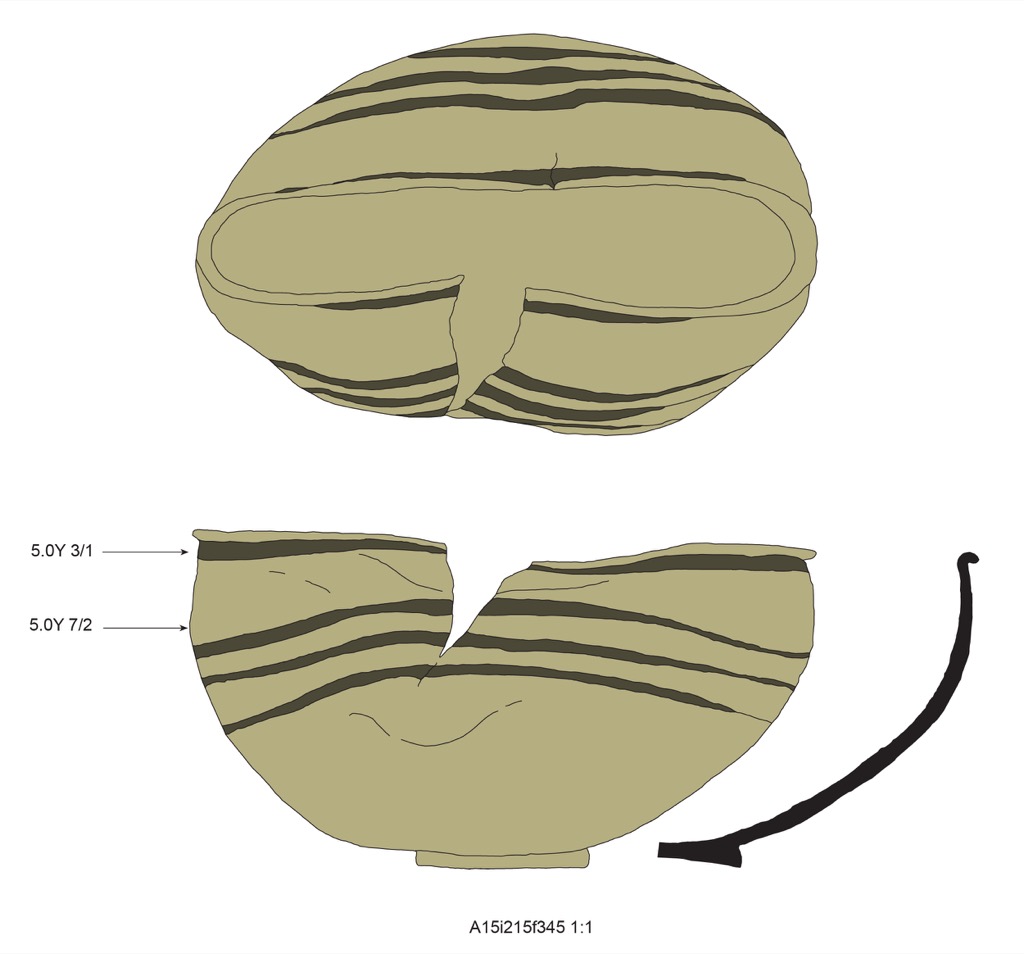
A15.215 Painted pot from a31 |
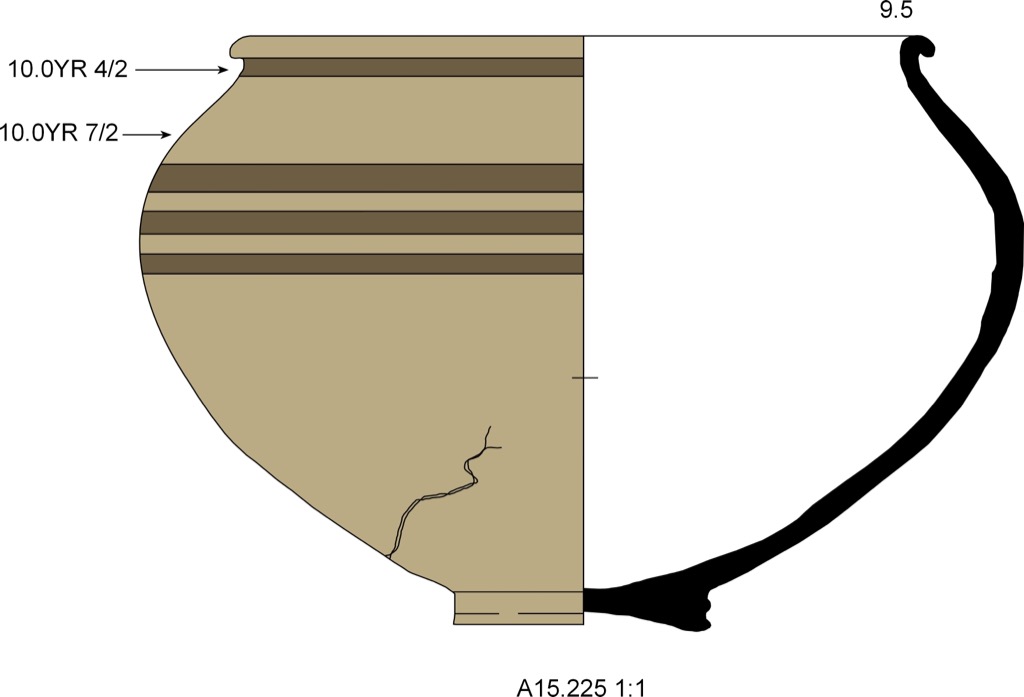
A15.225 Painted pot from a31 |
| | ||
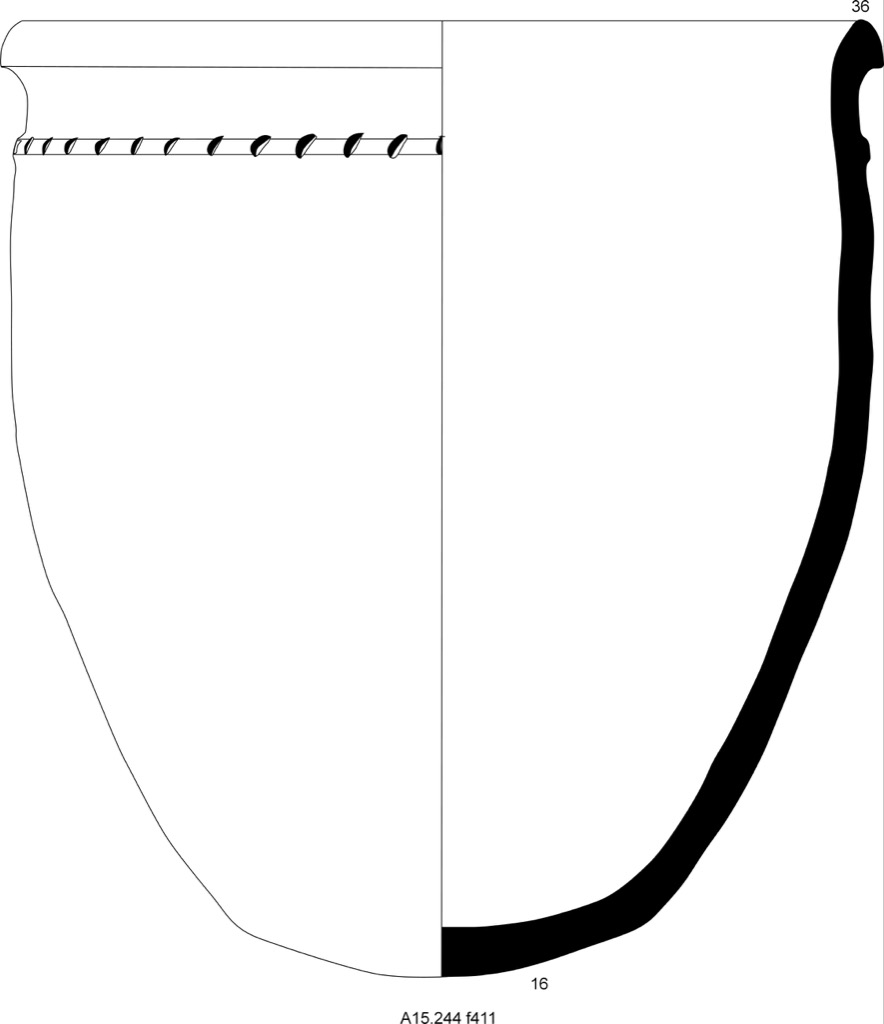
A15.244 Large deep bowl from a34 |
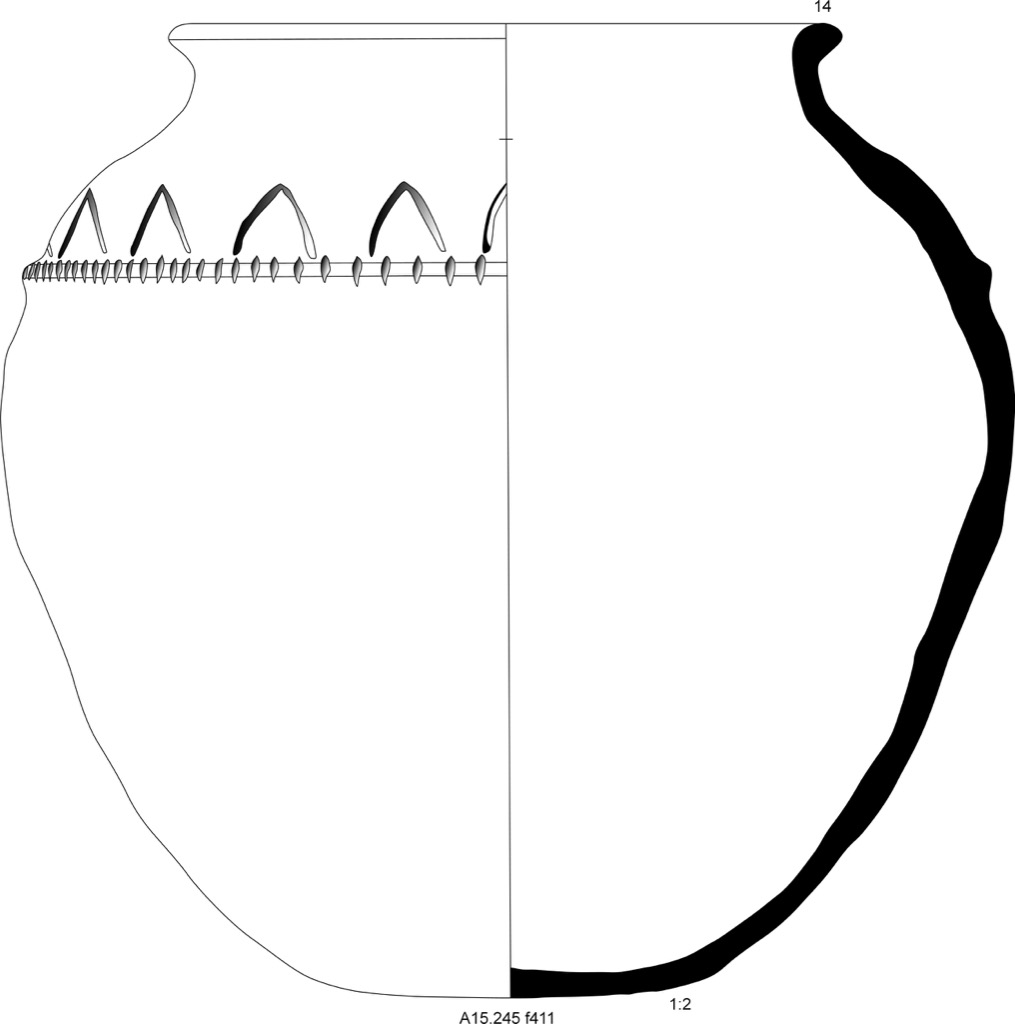
A15.245 Hole mouth jar from a34 |
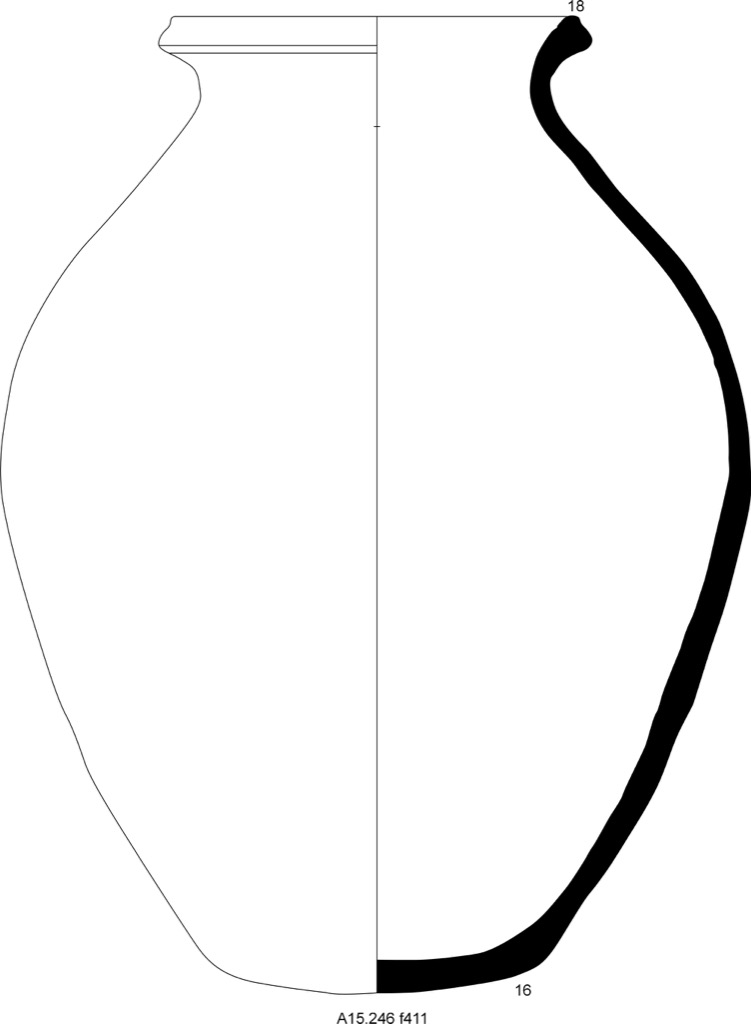
A15.246 Large necked jar from a34 |
Burials with complete vessels include a5, a7, a19, a20, a21, a24, a25 and a37; for a25, a jar was used for the burial itself (with the human remains inside the jar).
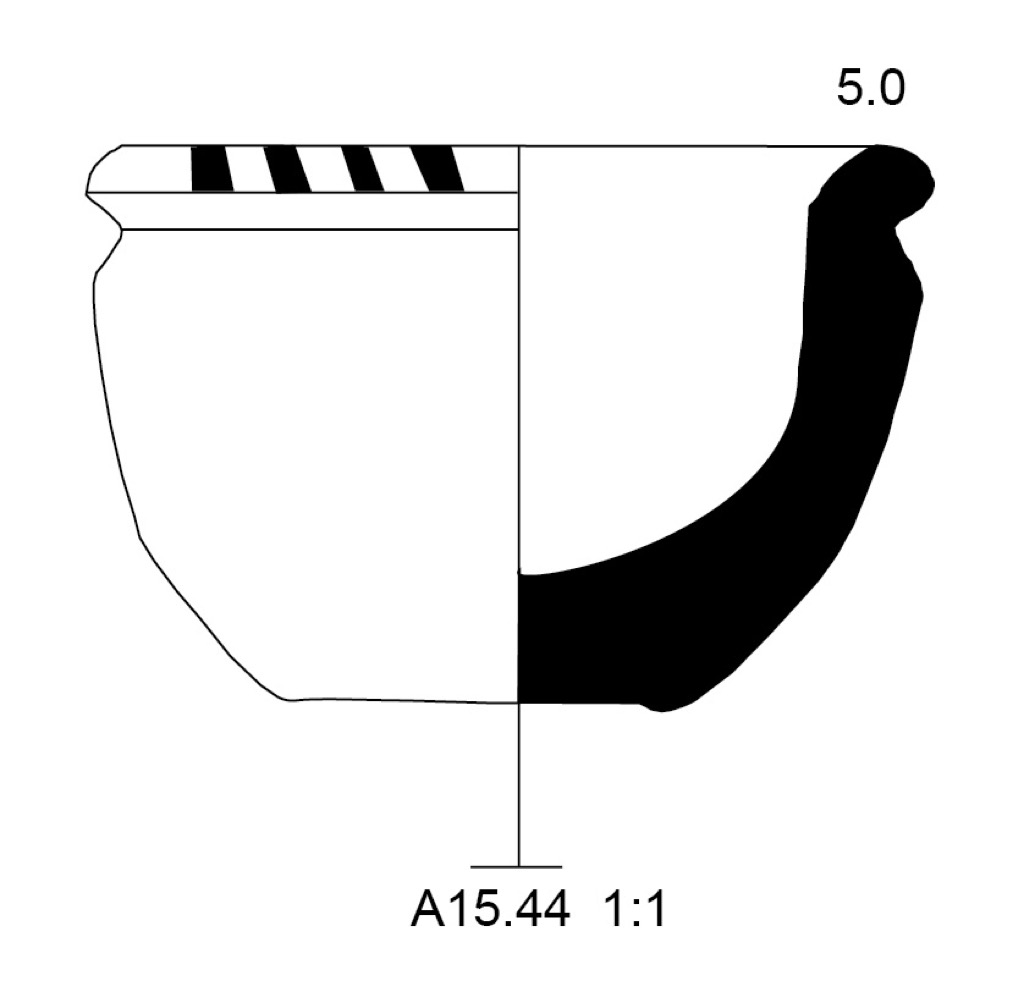
A15.44 Cup from a5 |
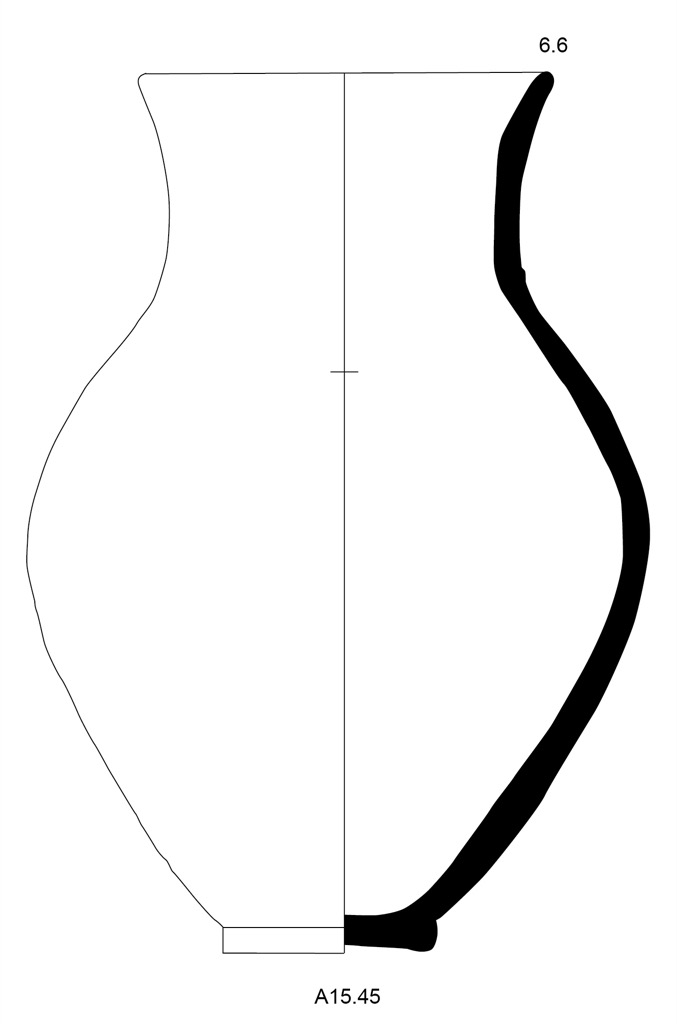
A15.45 Flaring necked jar from a5 |
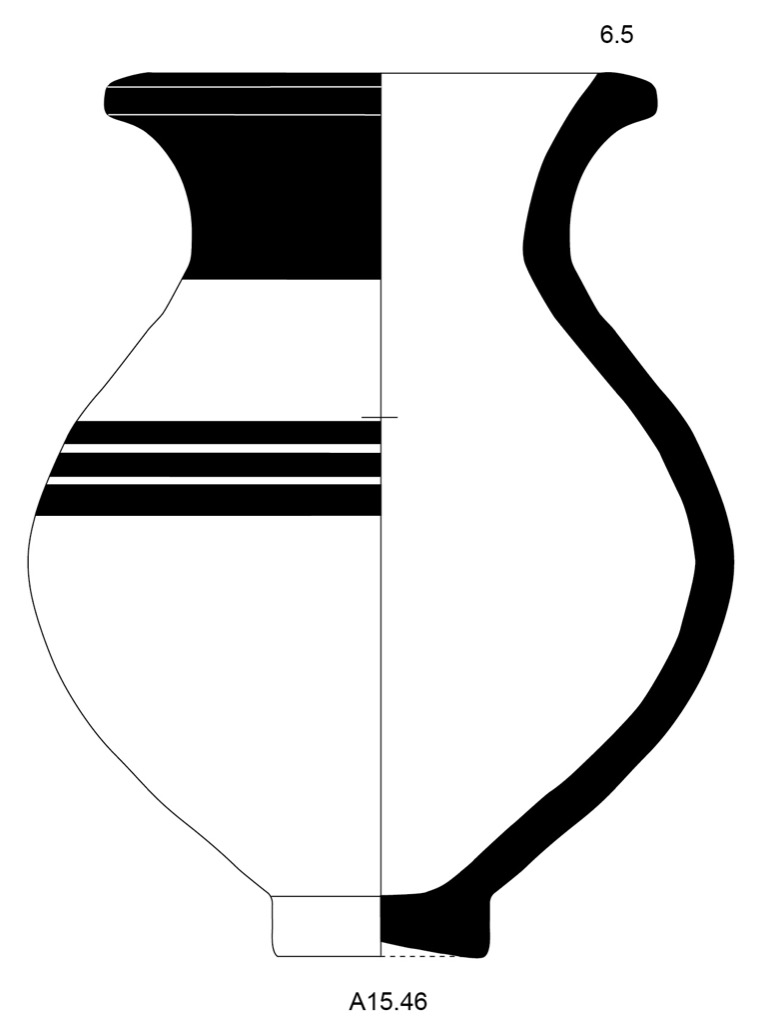
A15.46 Painted flaring necked jar from a5 |
|
| | |||
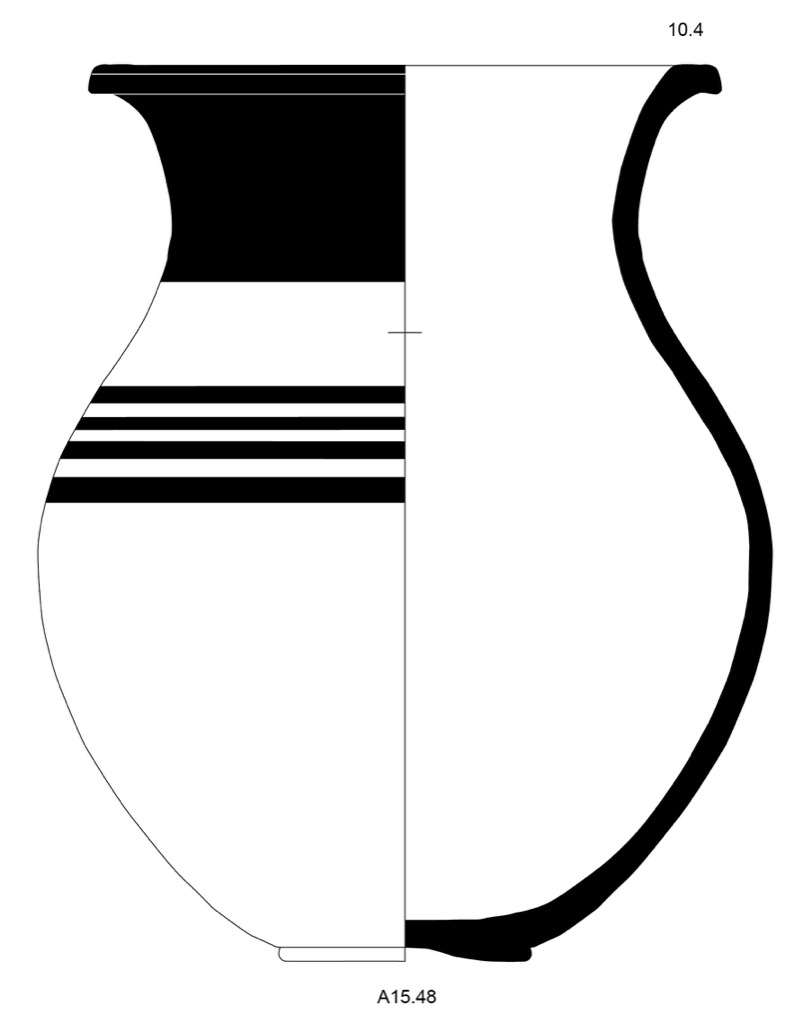
A15.48 Painted flaring necked jar from a7 |
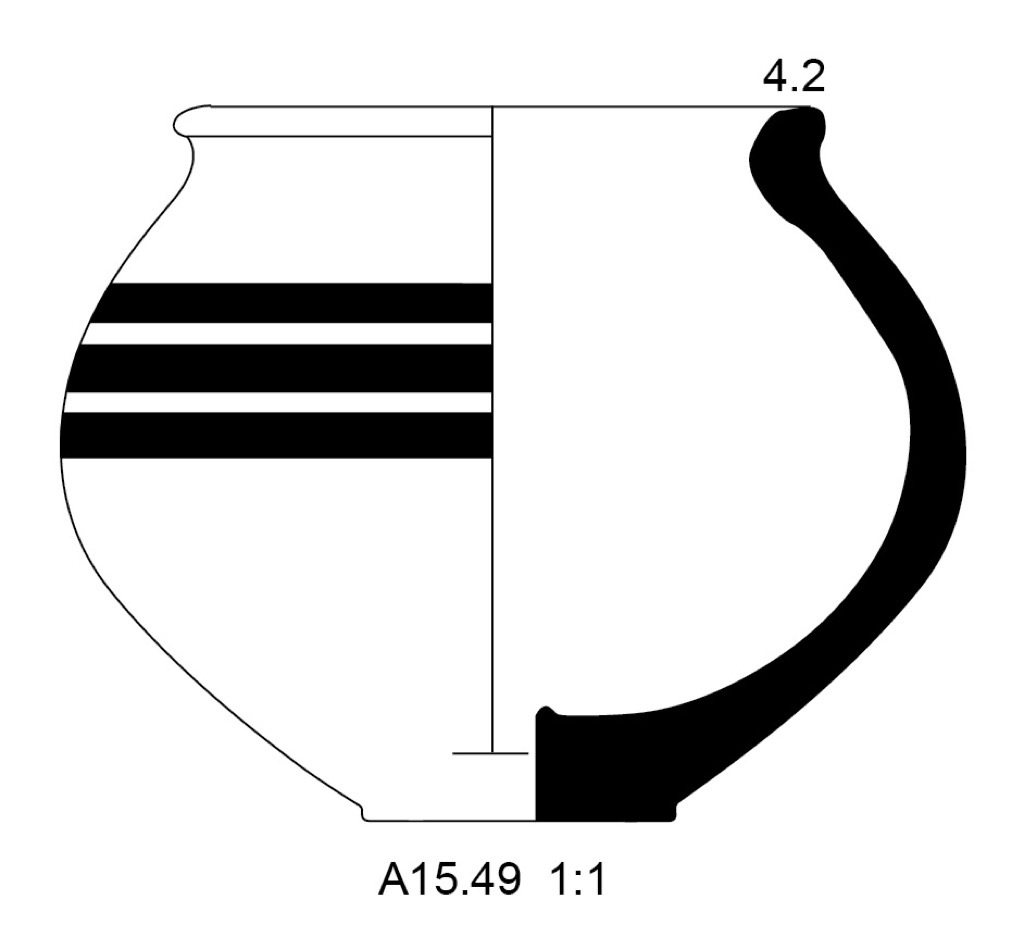
A15.49 Painted pot from a19 |
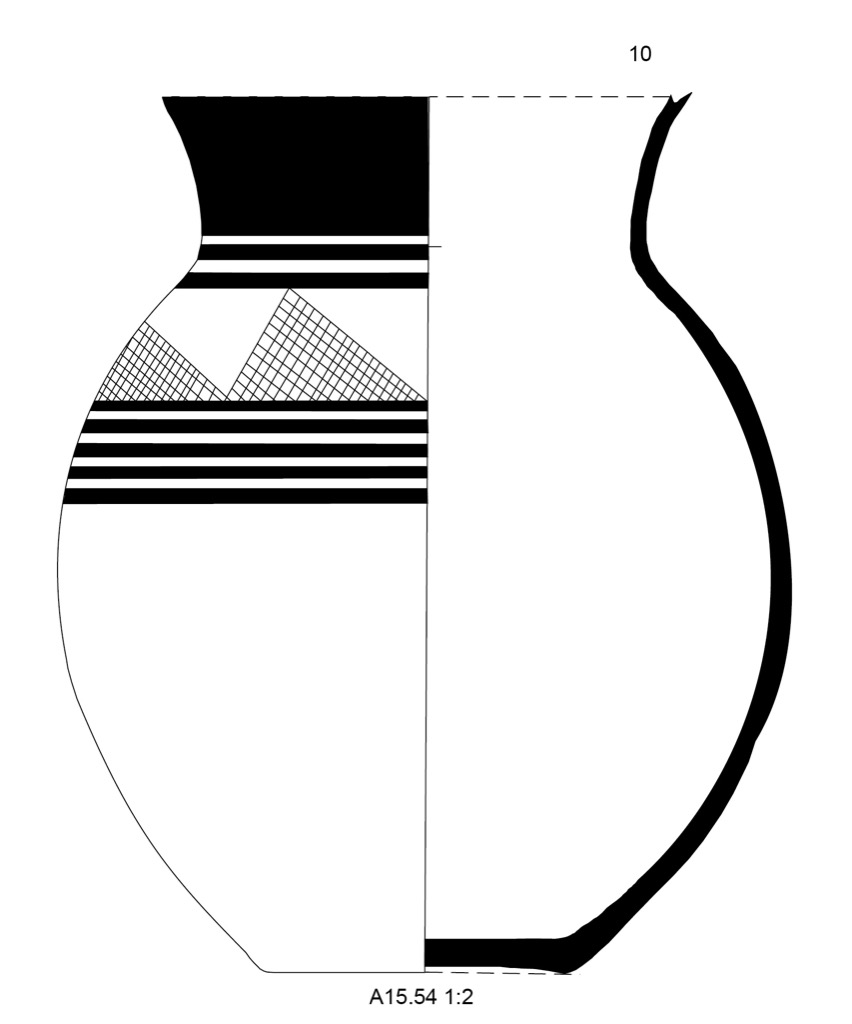
A15.54 Painted straight necked jar from a20 |
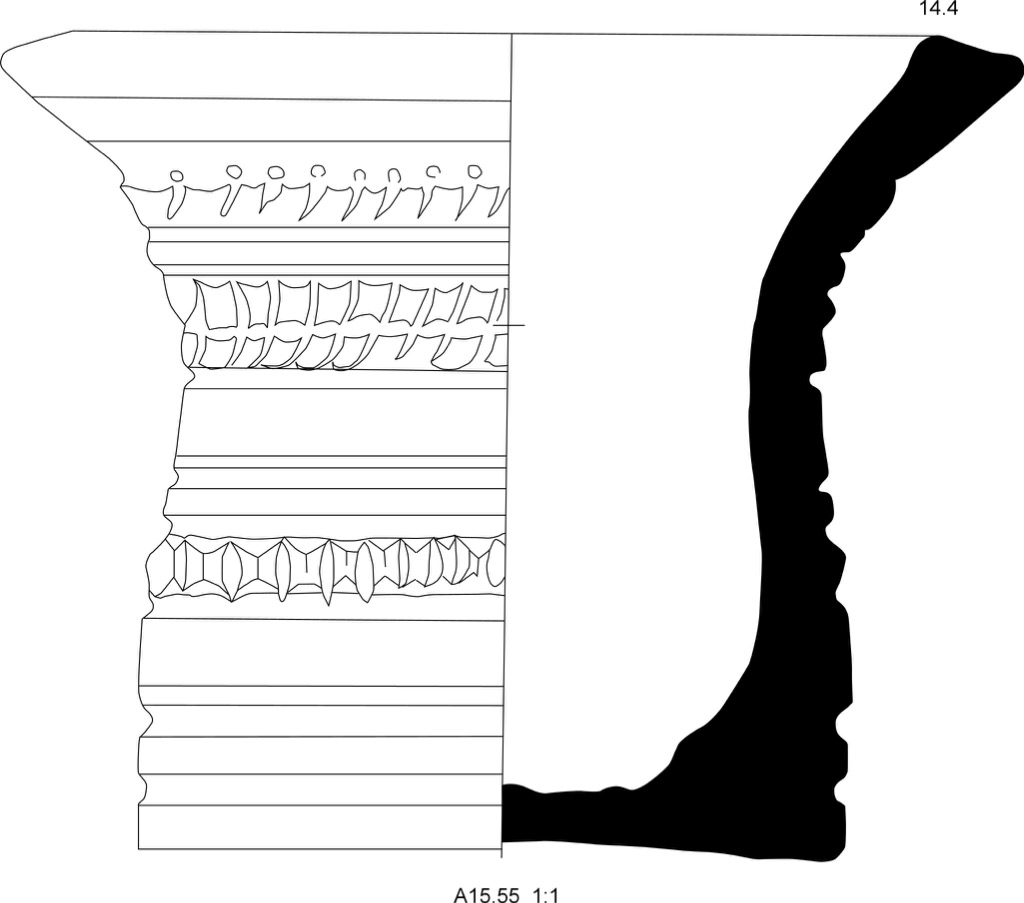
A15.55 Painted and incised other type of vessel from a20 |
| | |||
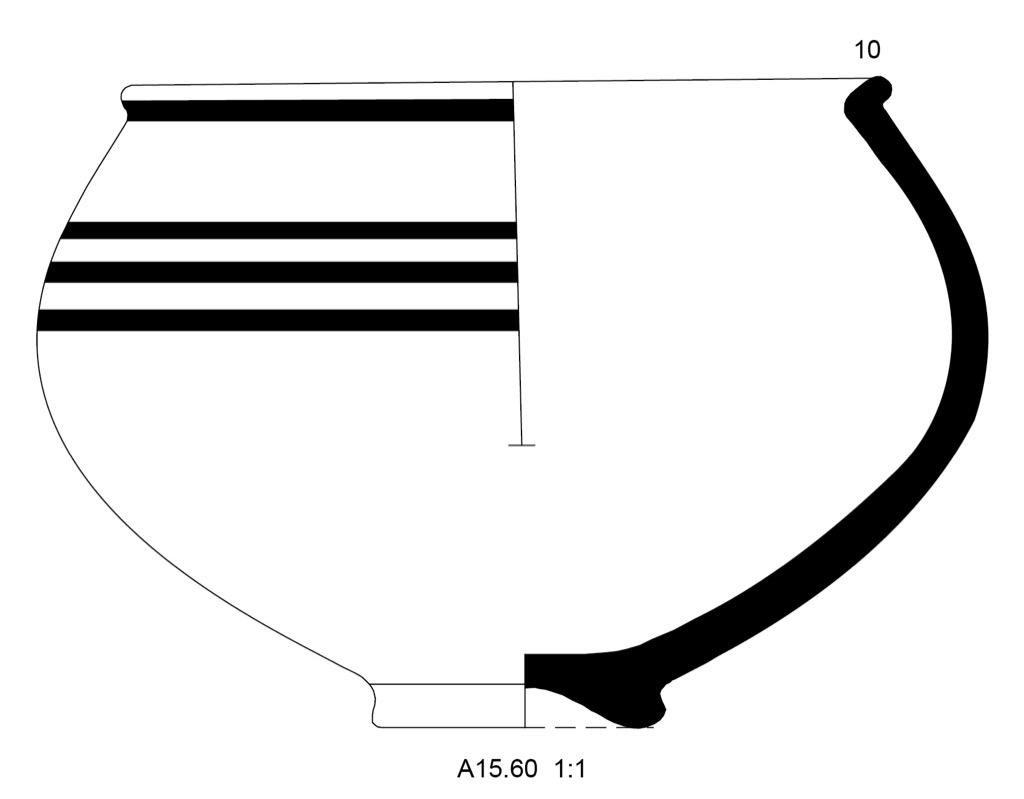
A15.60 Painted pot from a21 |
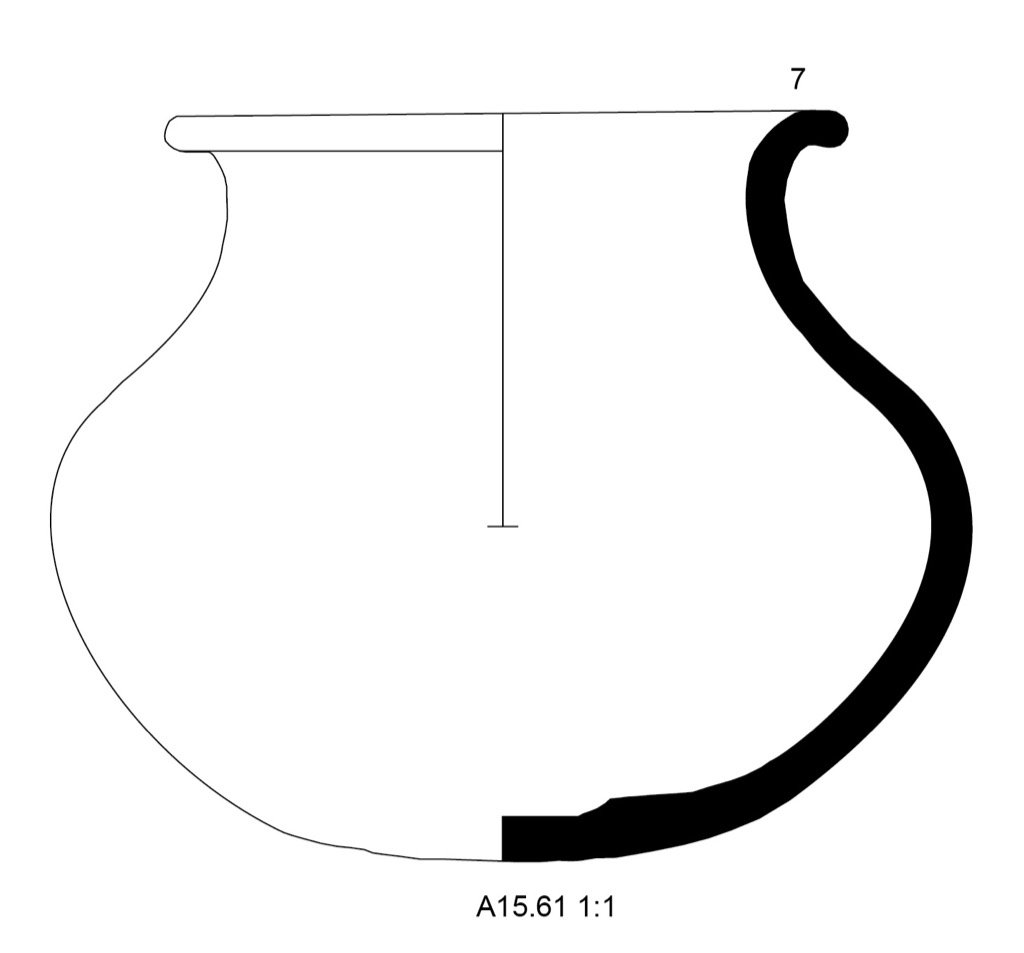
A15.61 Small shouldered jar from a21 |
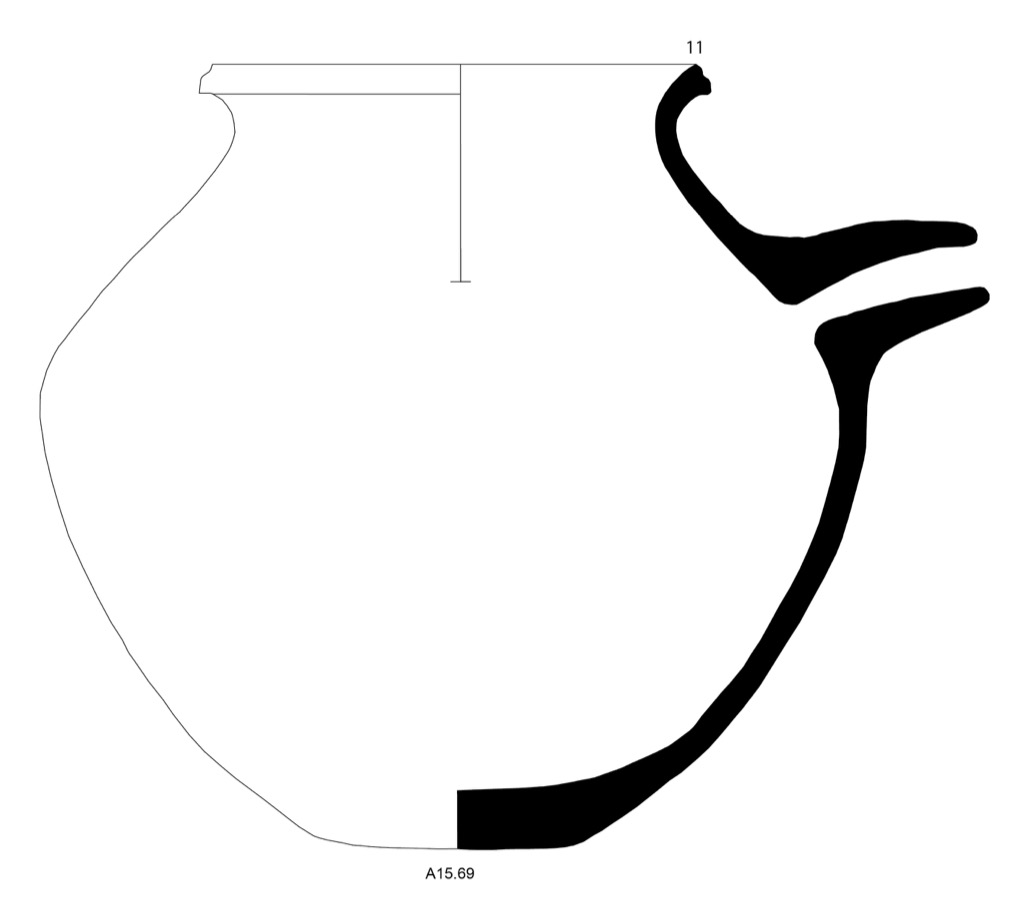
A15.69 Spouted pot from a24 |
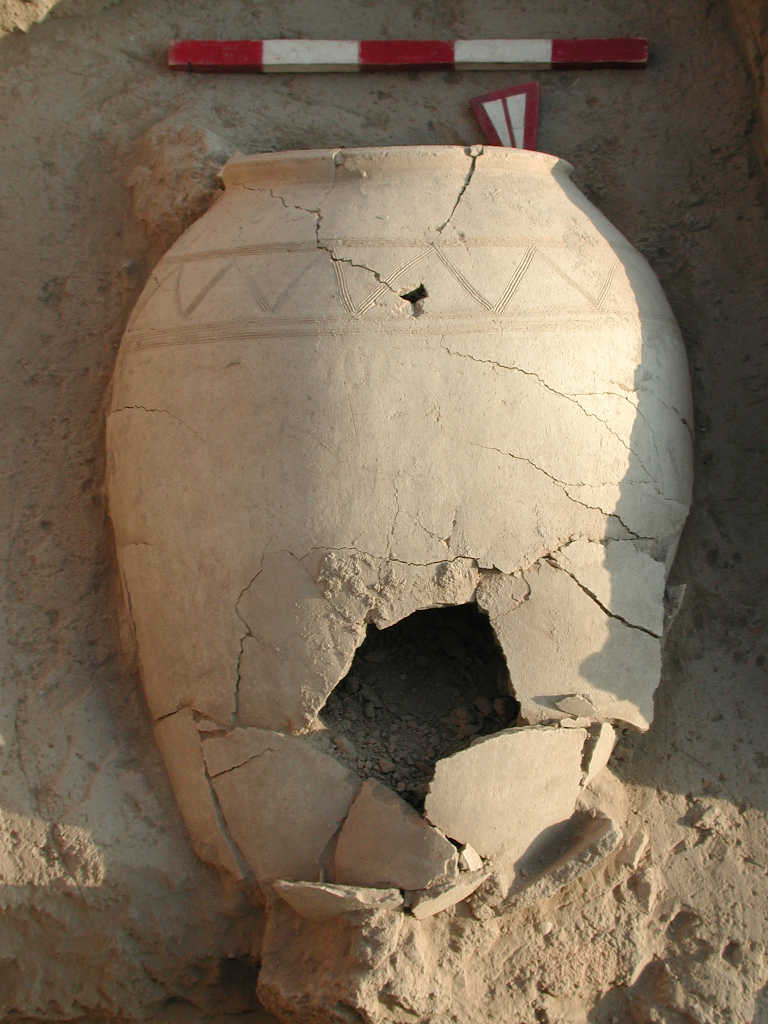
A15.59 Large hole mouth jar from a25, used as a burial jar |
| | |||
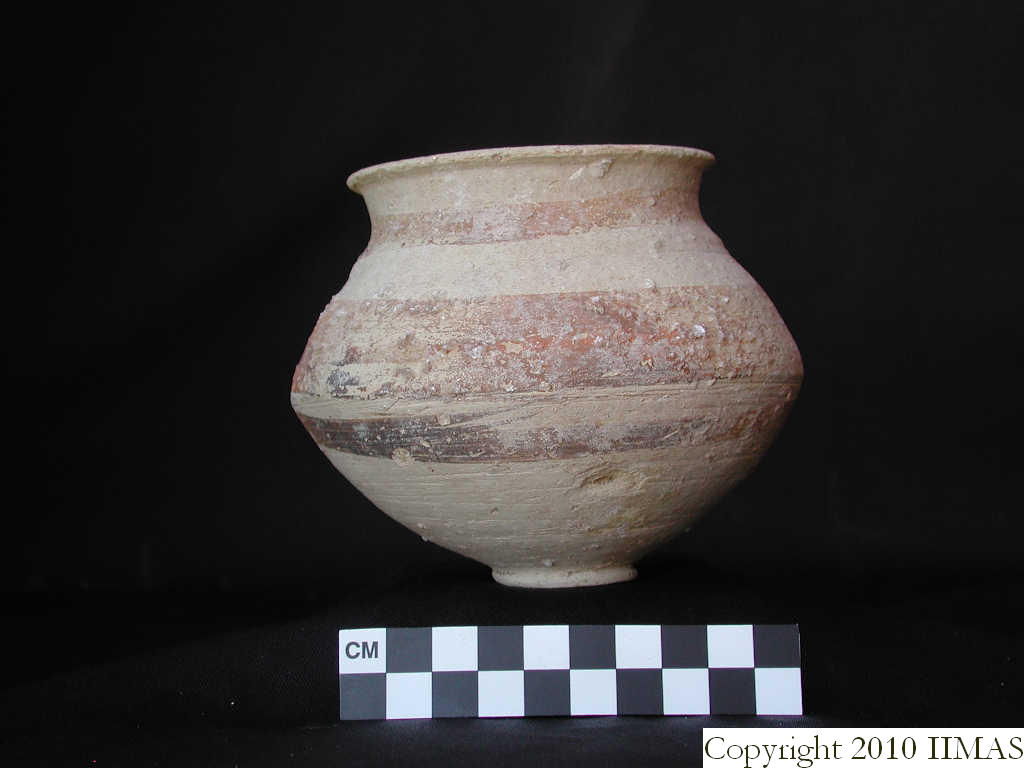
A15.66 Painted pot from a25, found inside A15.59 |
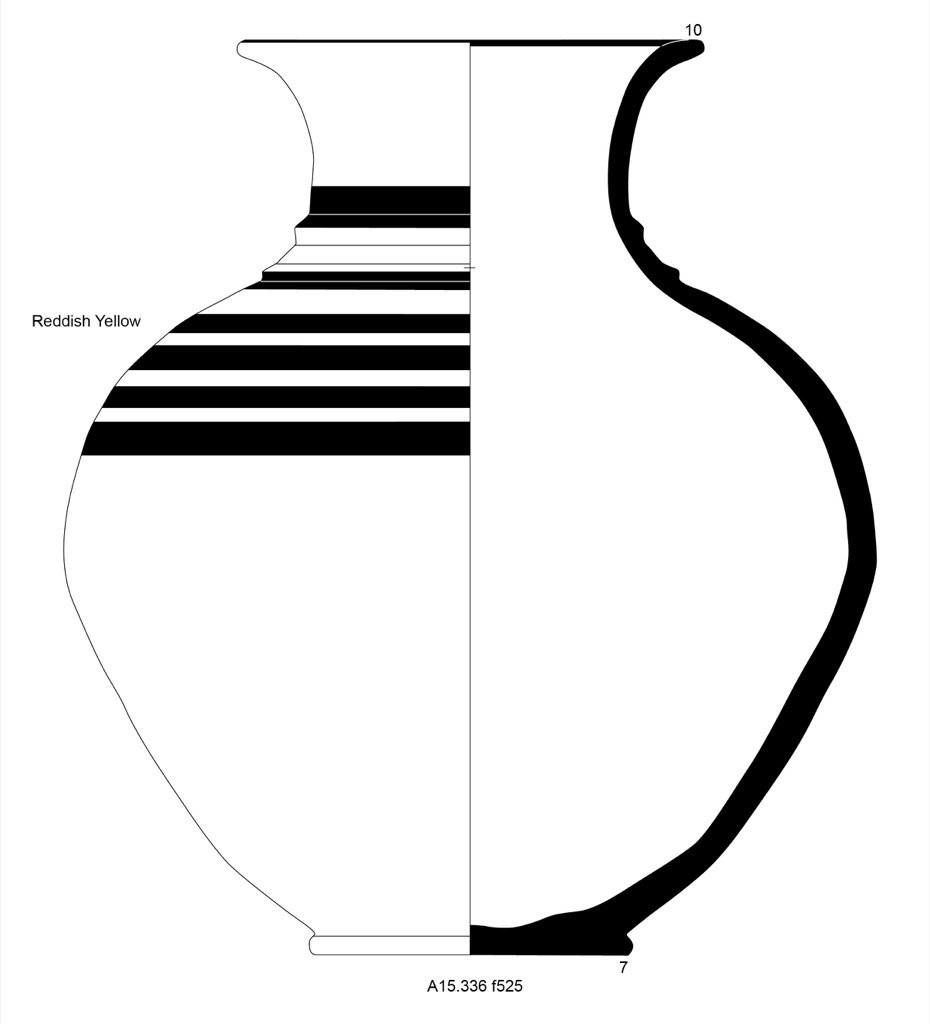
A15.336 Painted flaring necked jar from a37 |
Some of the complete vessels from A15 are also listed in the CERAMICS book under Shapes by typology: Whole vessels.
Assemblages
Some ceramic sherds and veseels from A15 are presented in assemblages that illustrate specific contexts, shapes or caches.A15 ceramic review
The A15 shape and body sherds were reviewed during 2022-2024, first by Marilyn Kelly-Buccellati with the assistance of Jessica Scaciga, and subsequently by Laerke Recht with the assistance of Tobias Welz, Lukas Gran and Carl Sanfilipo.
A full list of the analysed q-lots can be found here.
The review process consists of checking the 'cumulative' excel sheets of all sherds, drawings and photos for consistency and correct coding. During this, a number of sherds and drawings were corrected, relabelled or even removed from the record due to unsolvable errors.
We have aimed to maintain as many records as possible, noting changes and uncertainties in the pages of the relevant q-lots or individual sherds. Where it was not possible to solve an error, sherds were removed from the official record, but kept in error files.
A complete record of the changes made in the process can be found in three files:
- A15 ceramics error log, which lists the actions taken to resolve errors in the excel files
- A15 removed ceramics log, which lists the removed sequences of ceramics from the shape and body sherd files
- A15 ceramic drawings error log, which records the corrections made to ceramic drawings
Note: The usual procedure for MZ ceramics is to use p-numbers from 1-69 for shape sherds, and 70-99 for body sherds. For A15, numbers below p70 have occasionally been used for body sherds, and decimal numbers (e.g. p70.1, p70.2 etc) were sometimes used for individual body sherds.